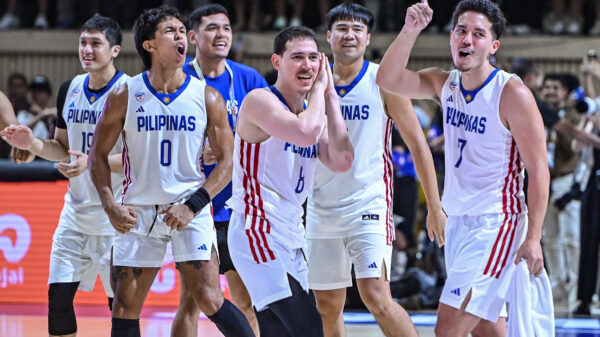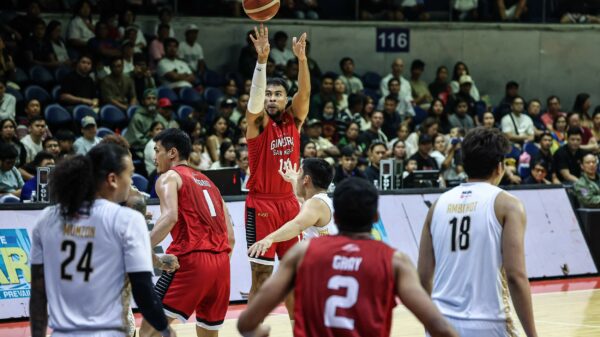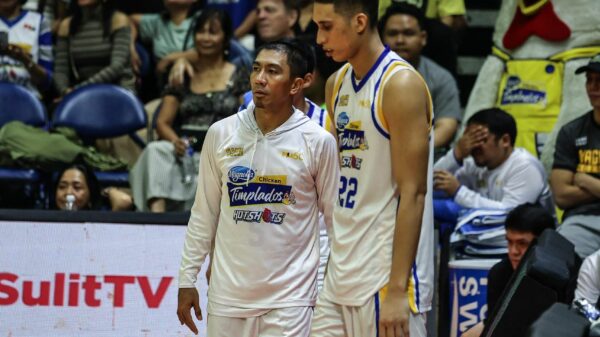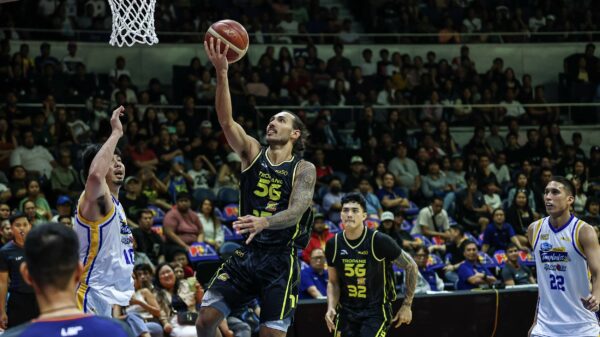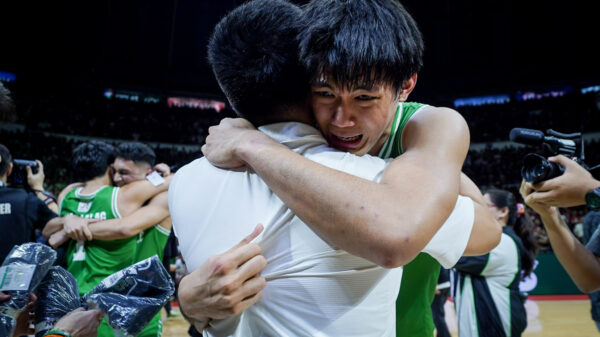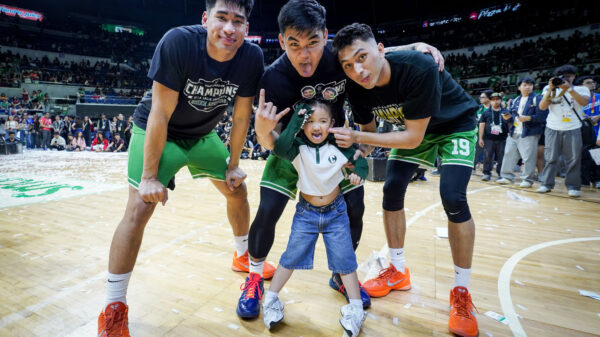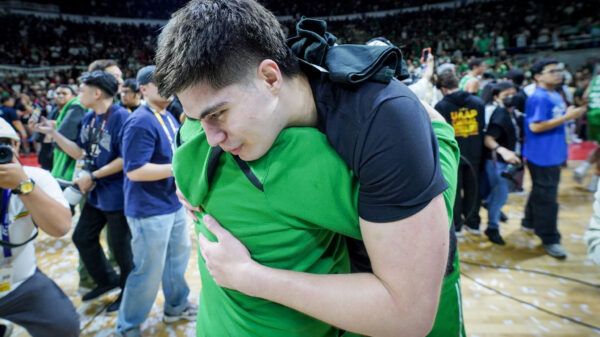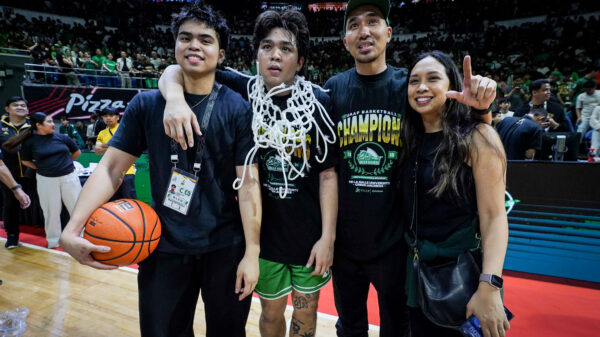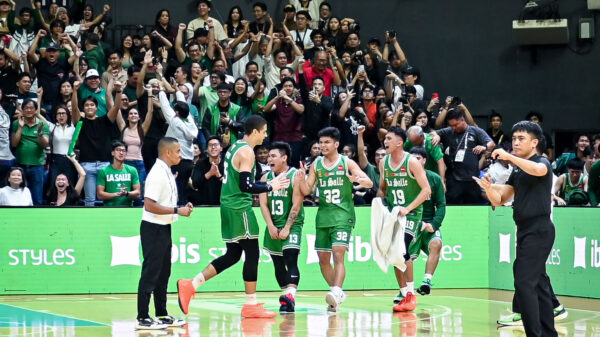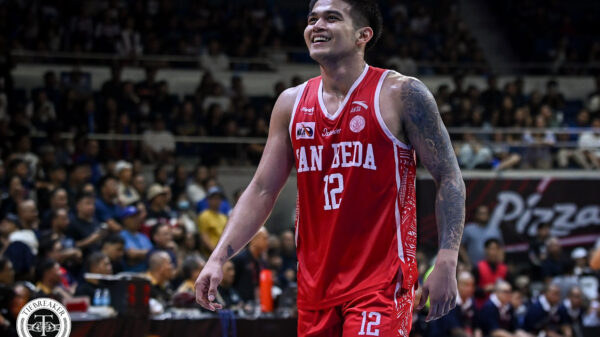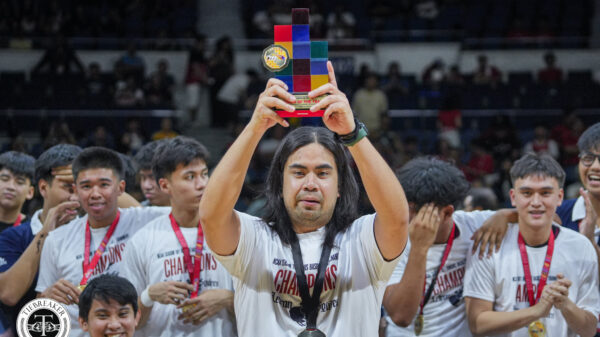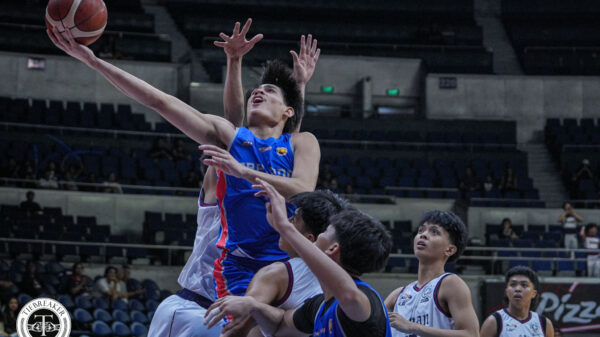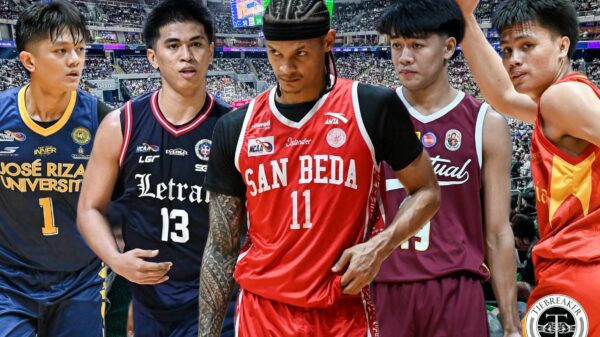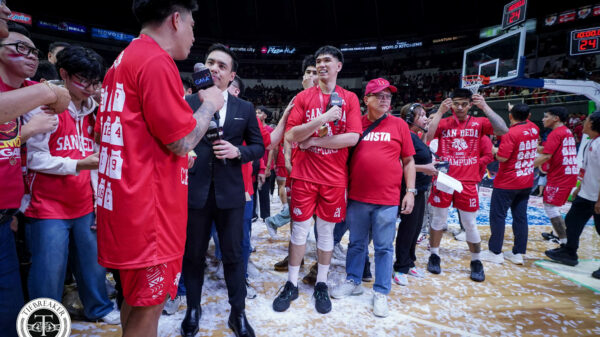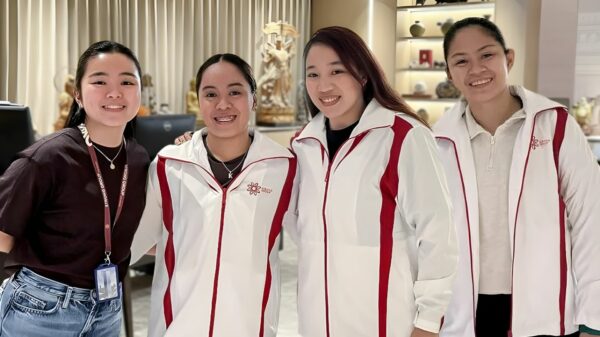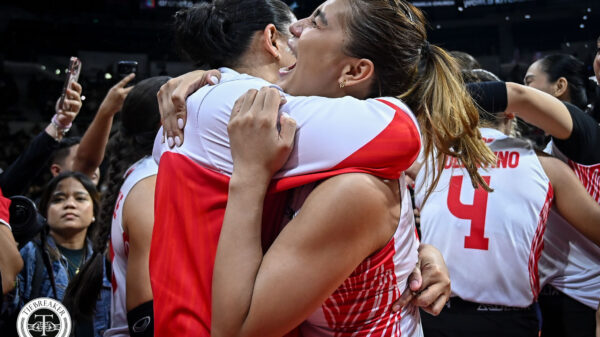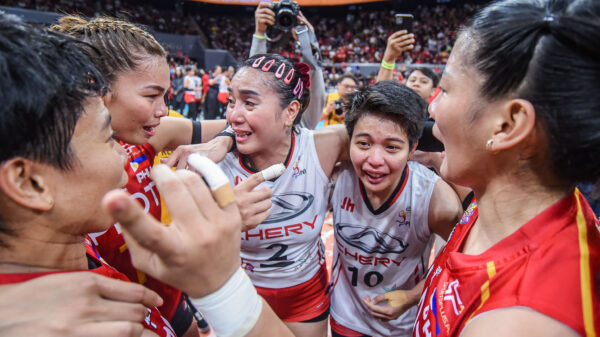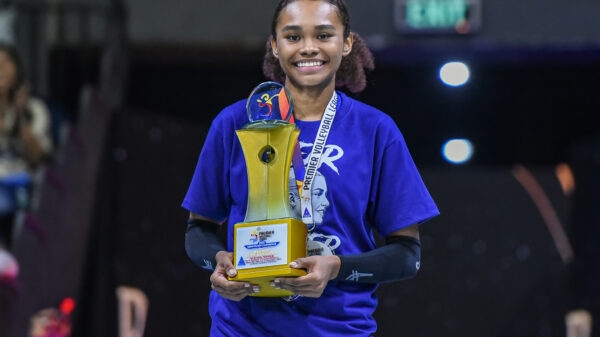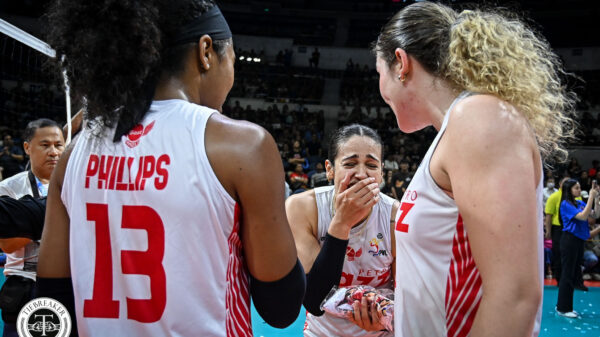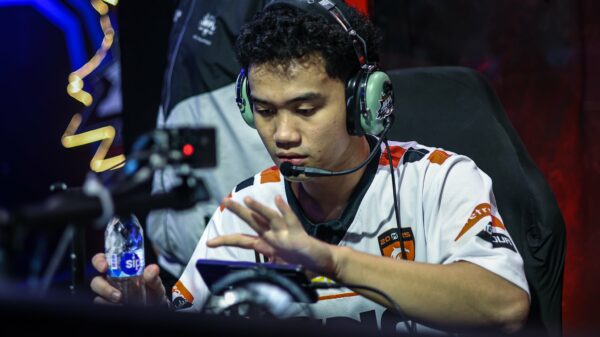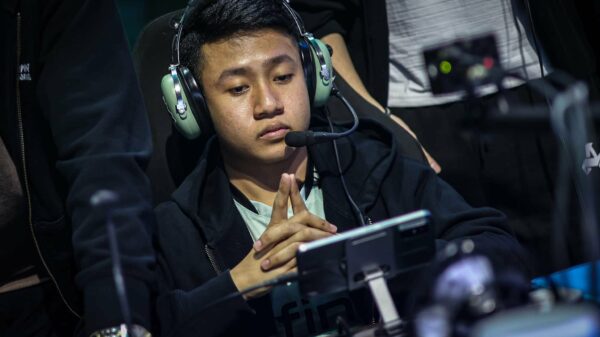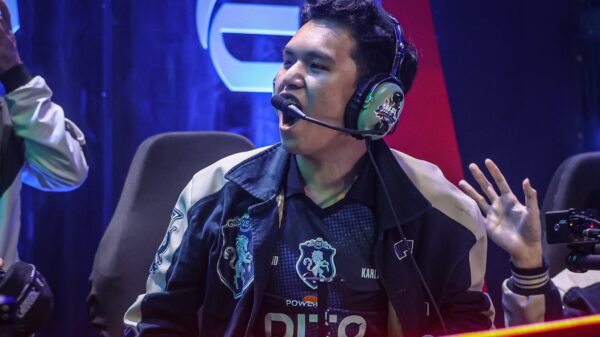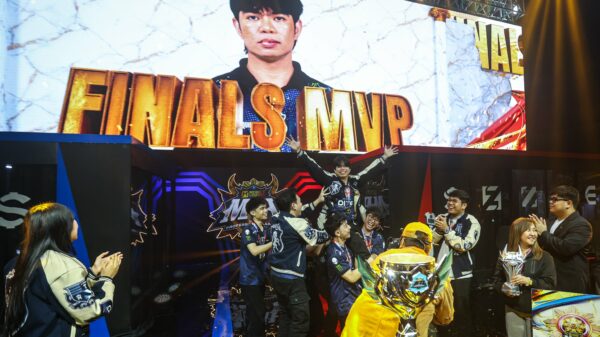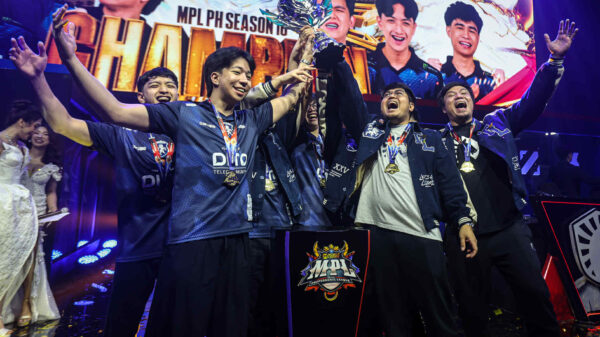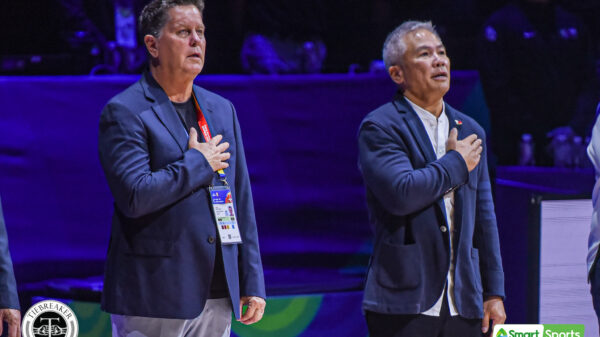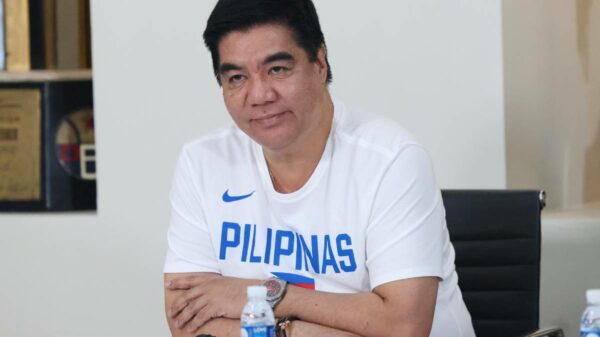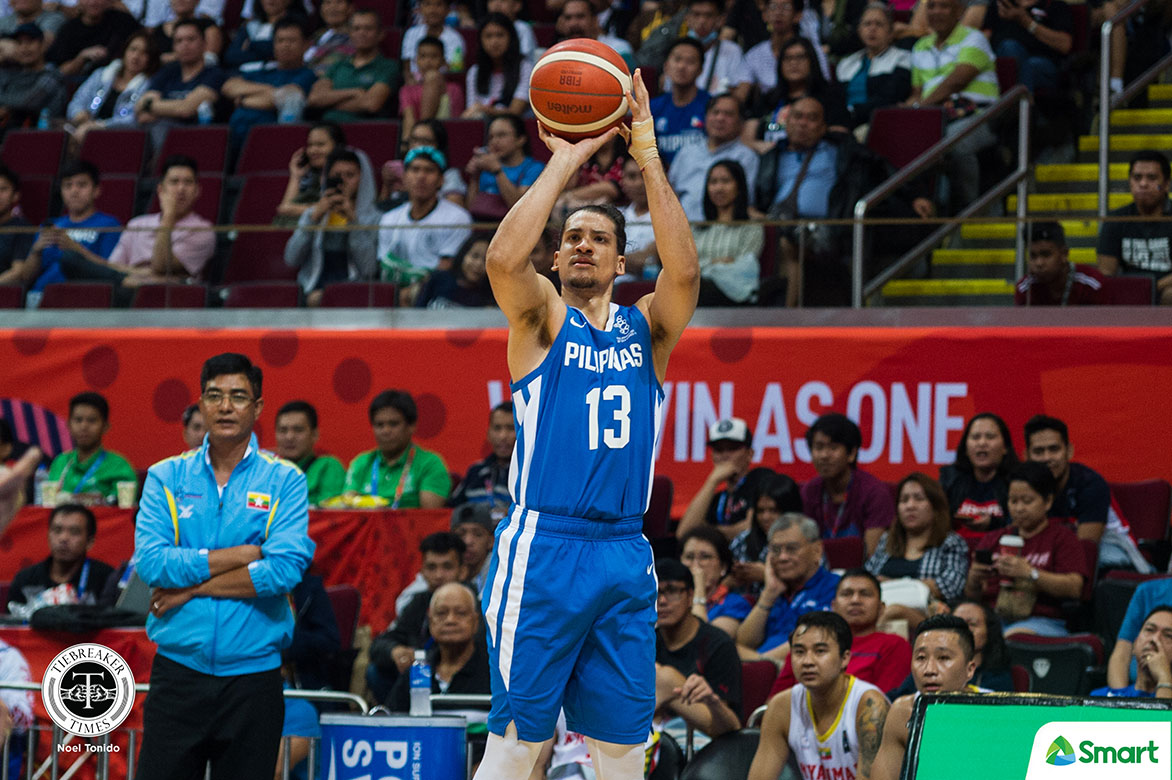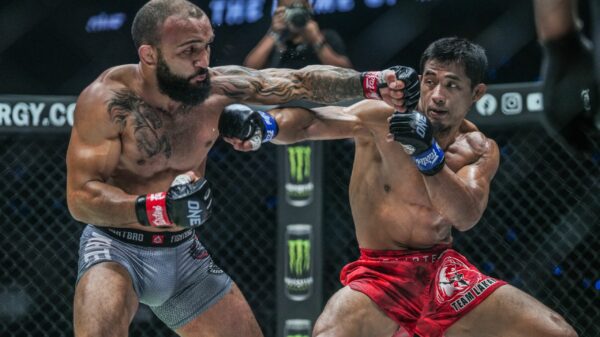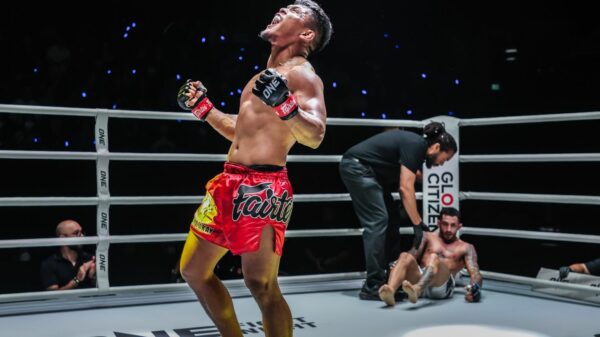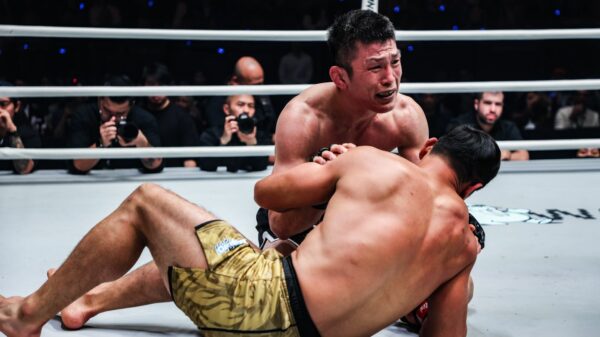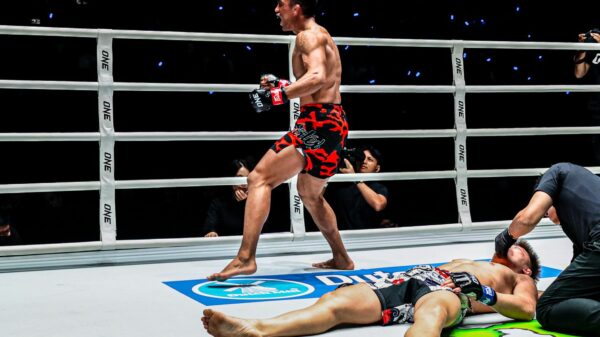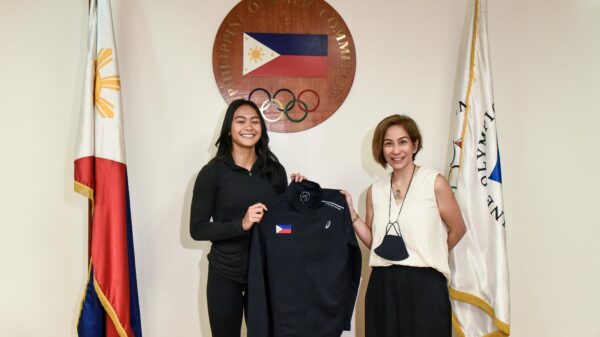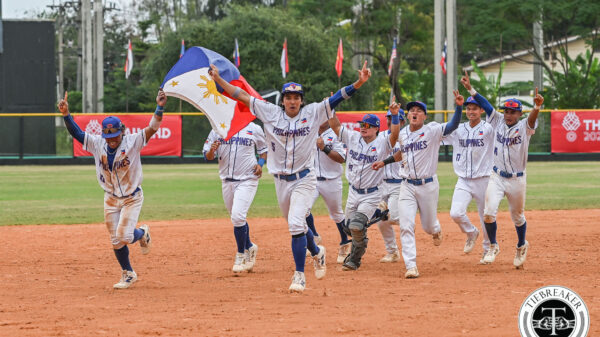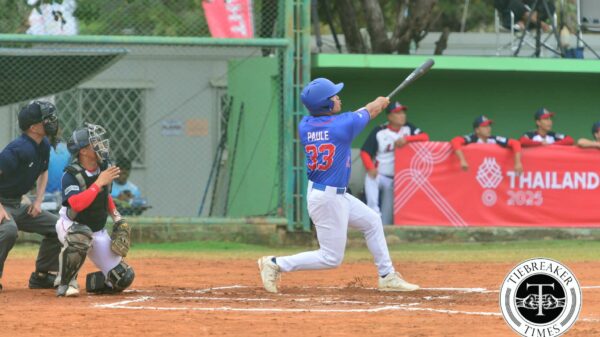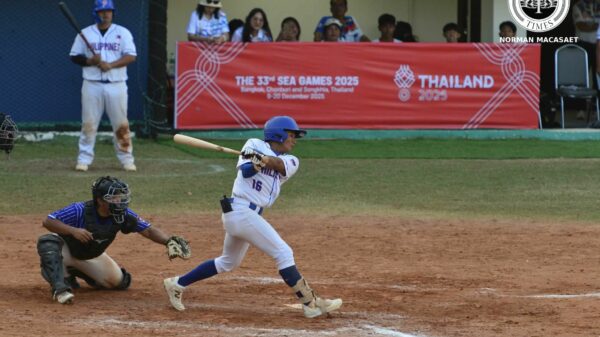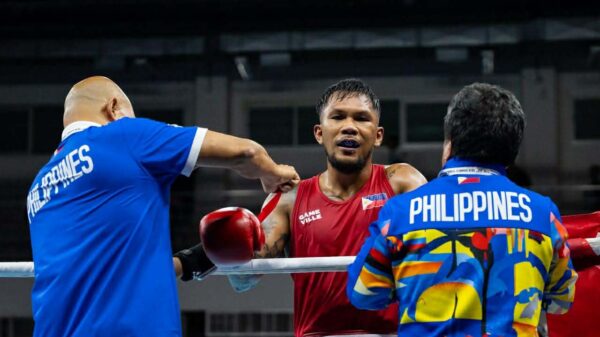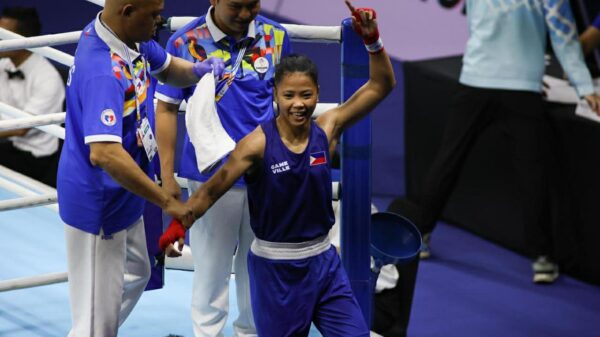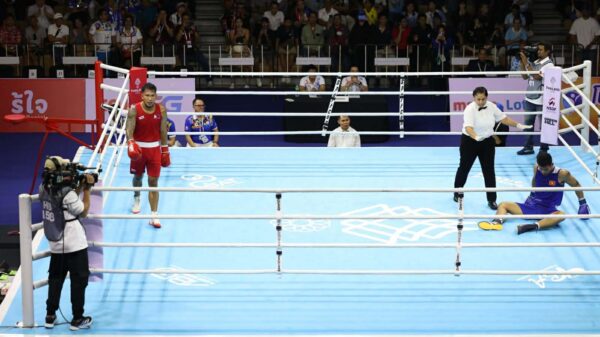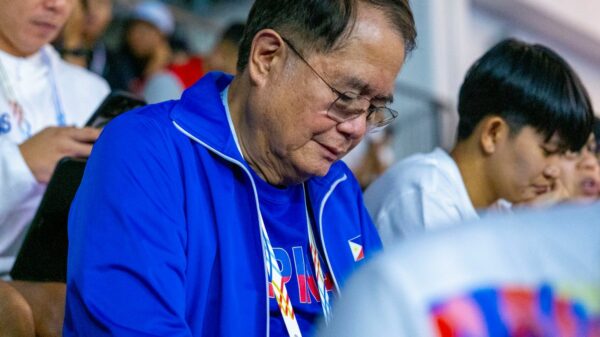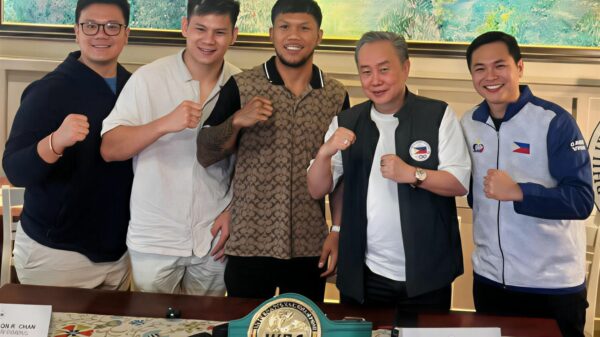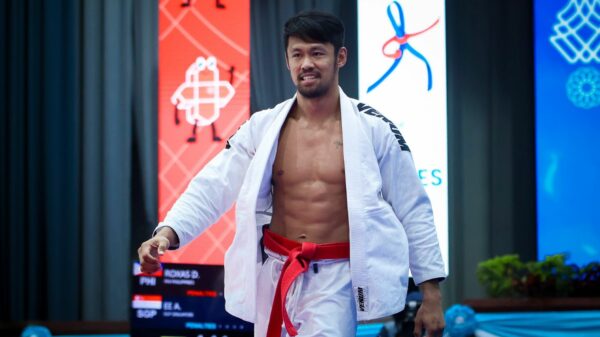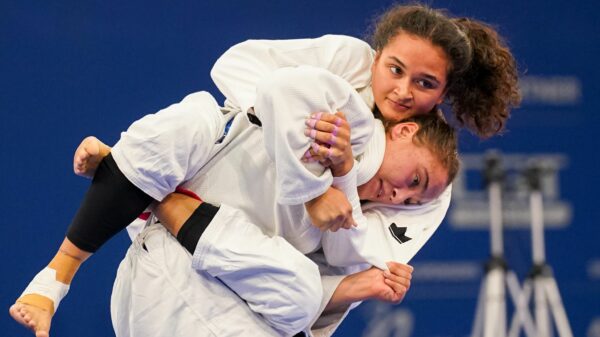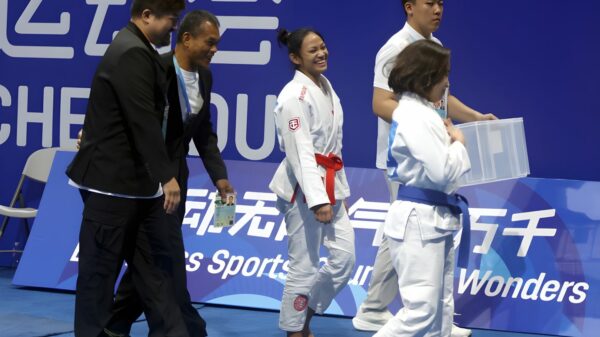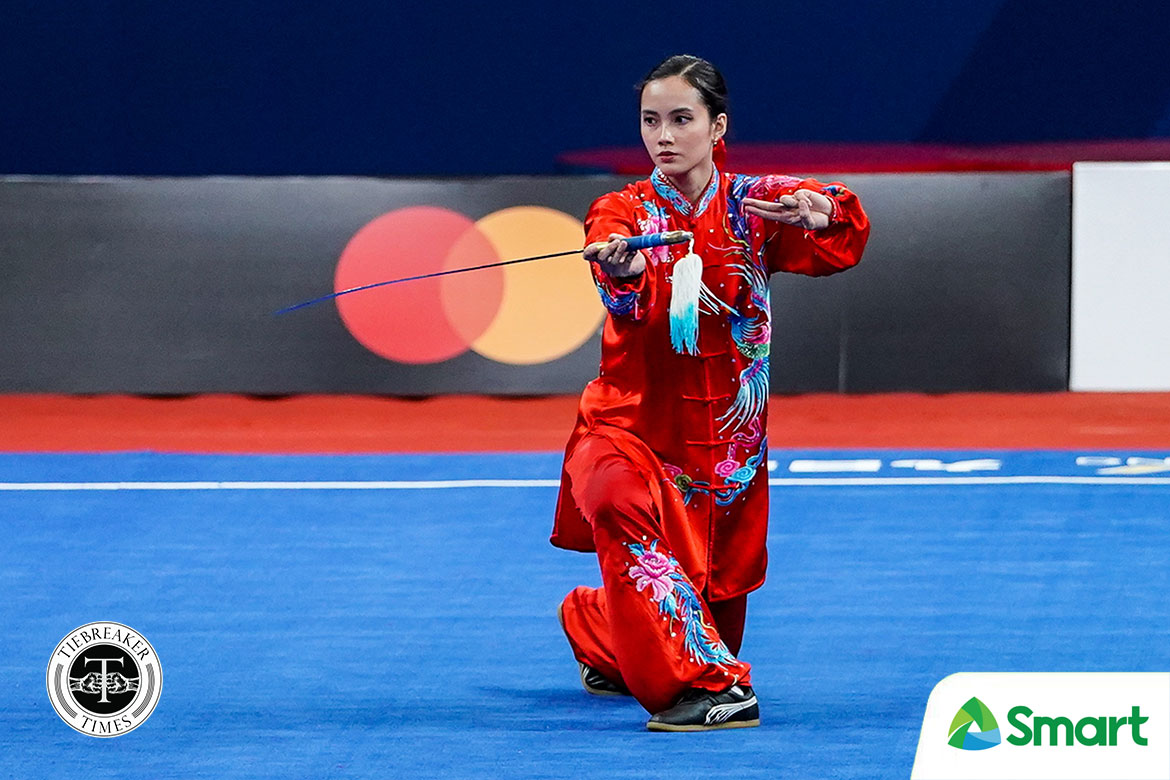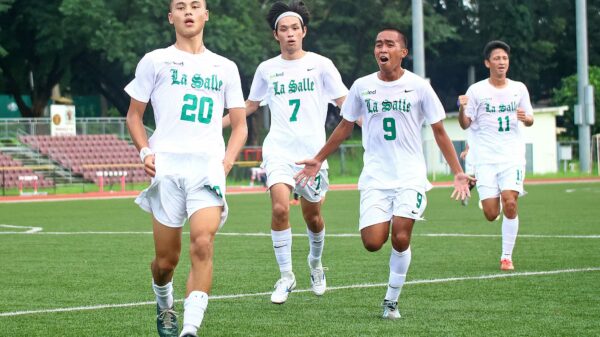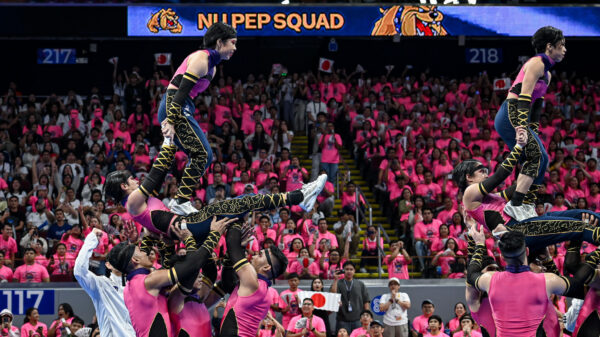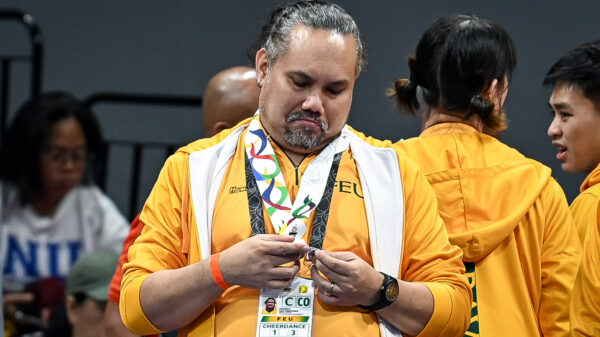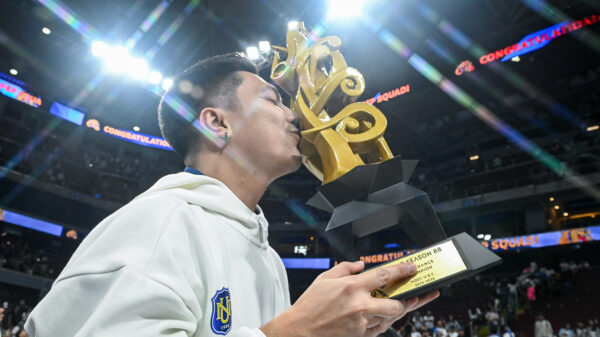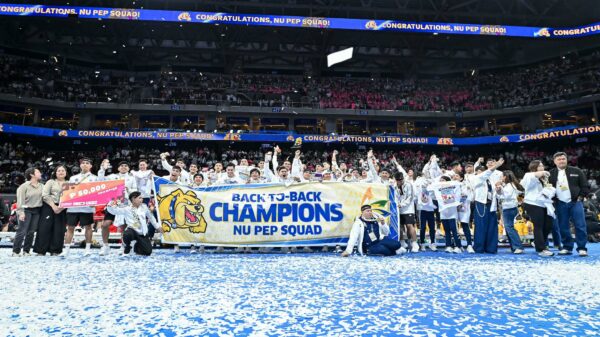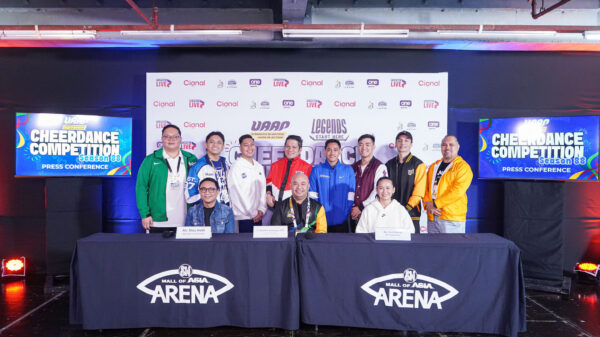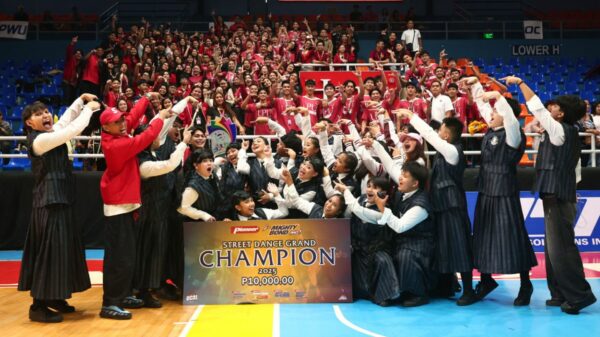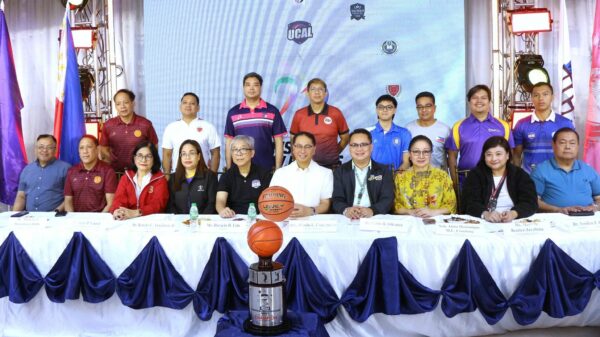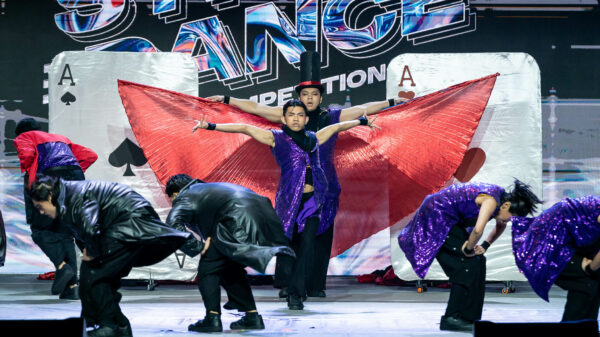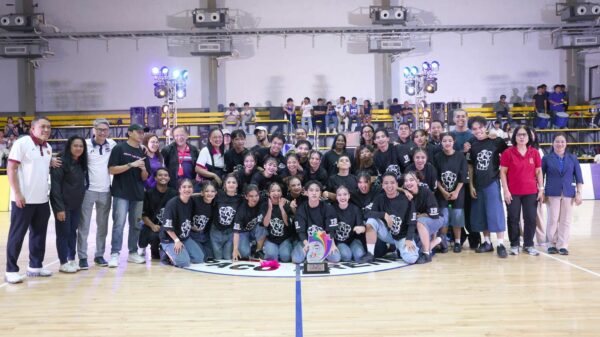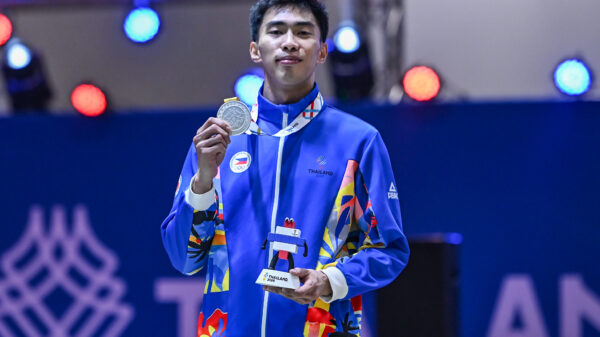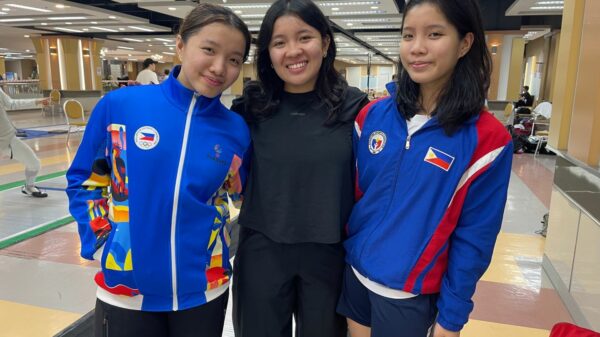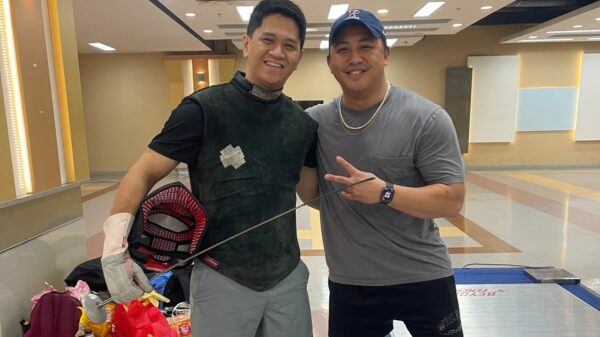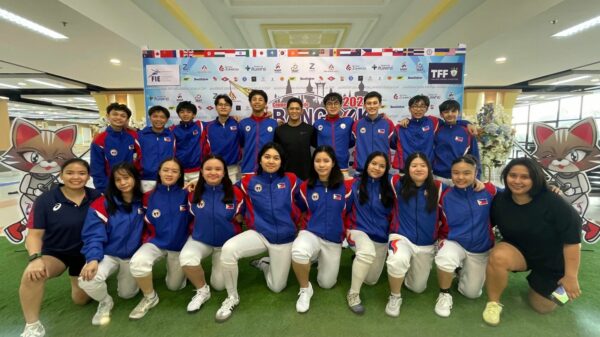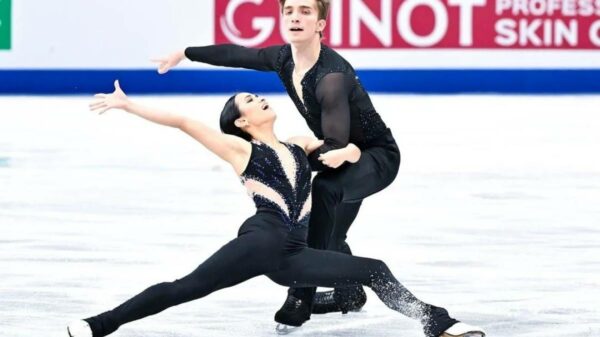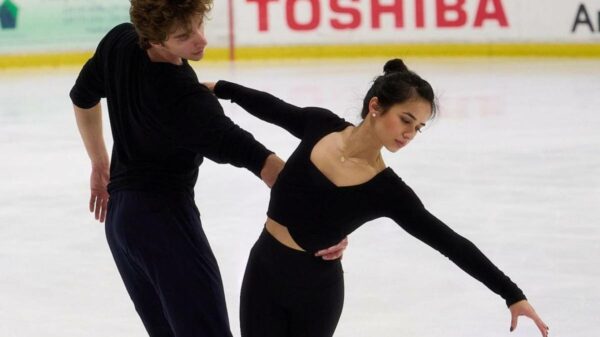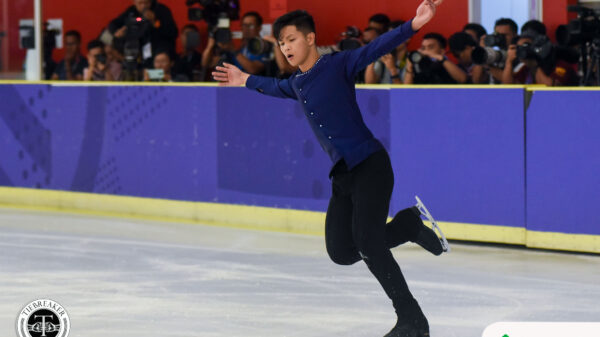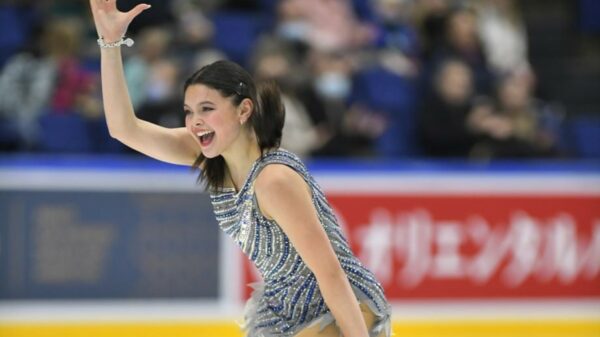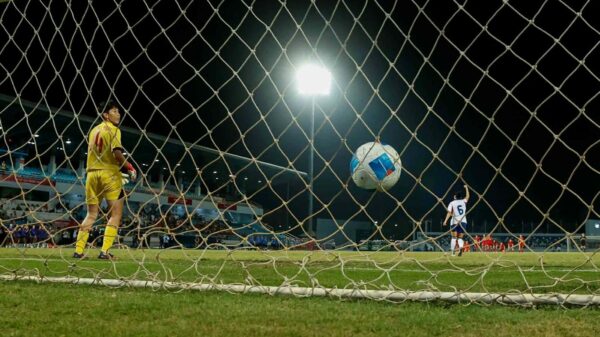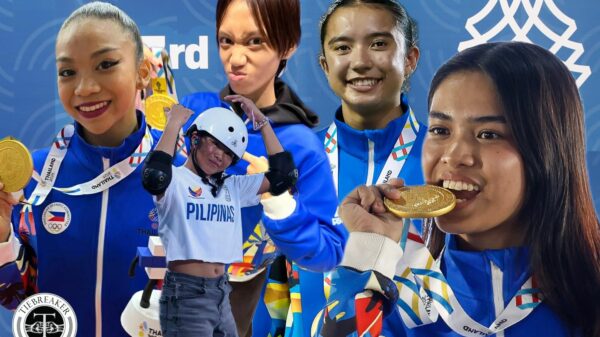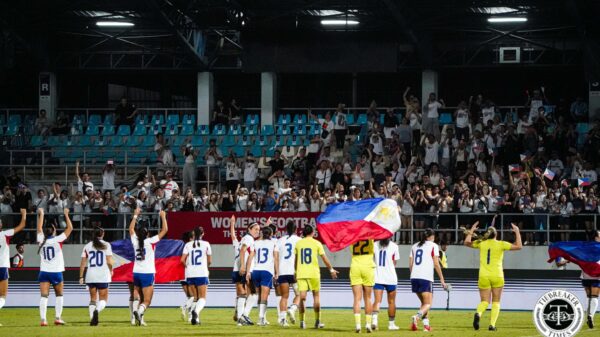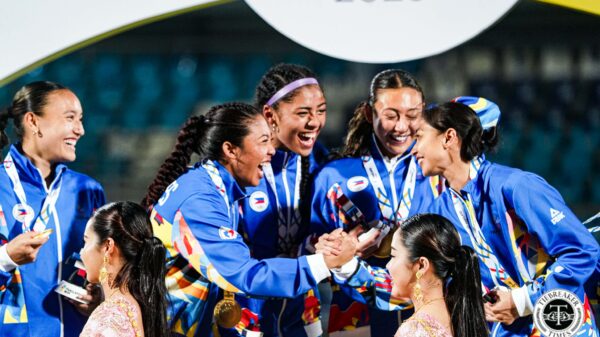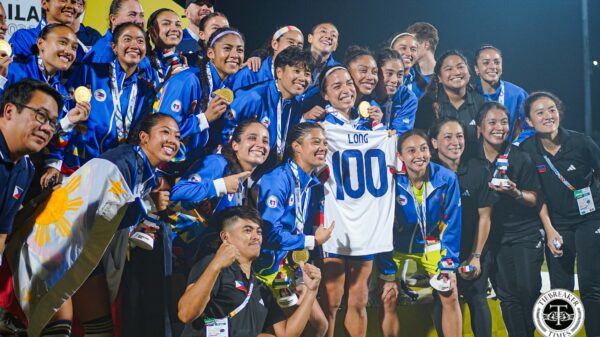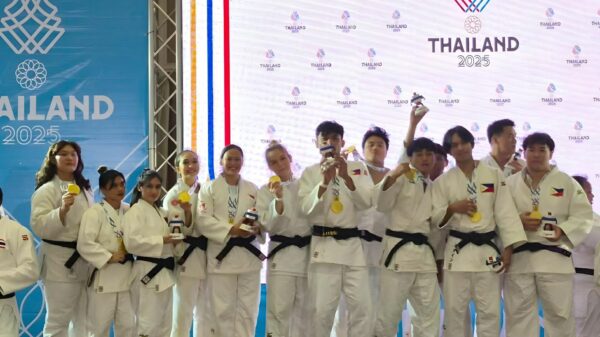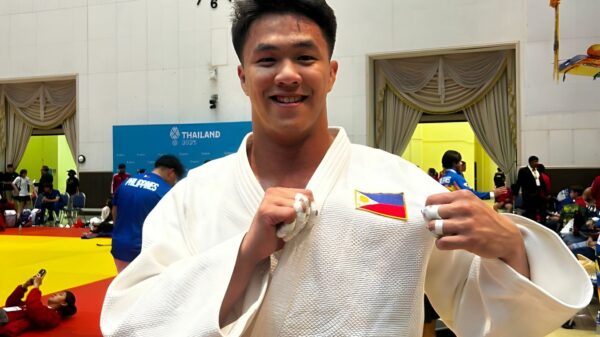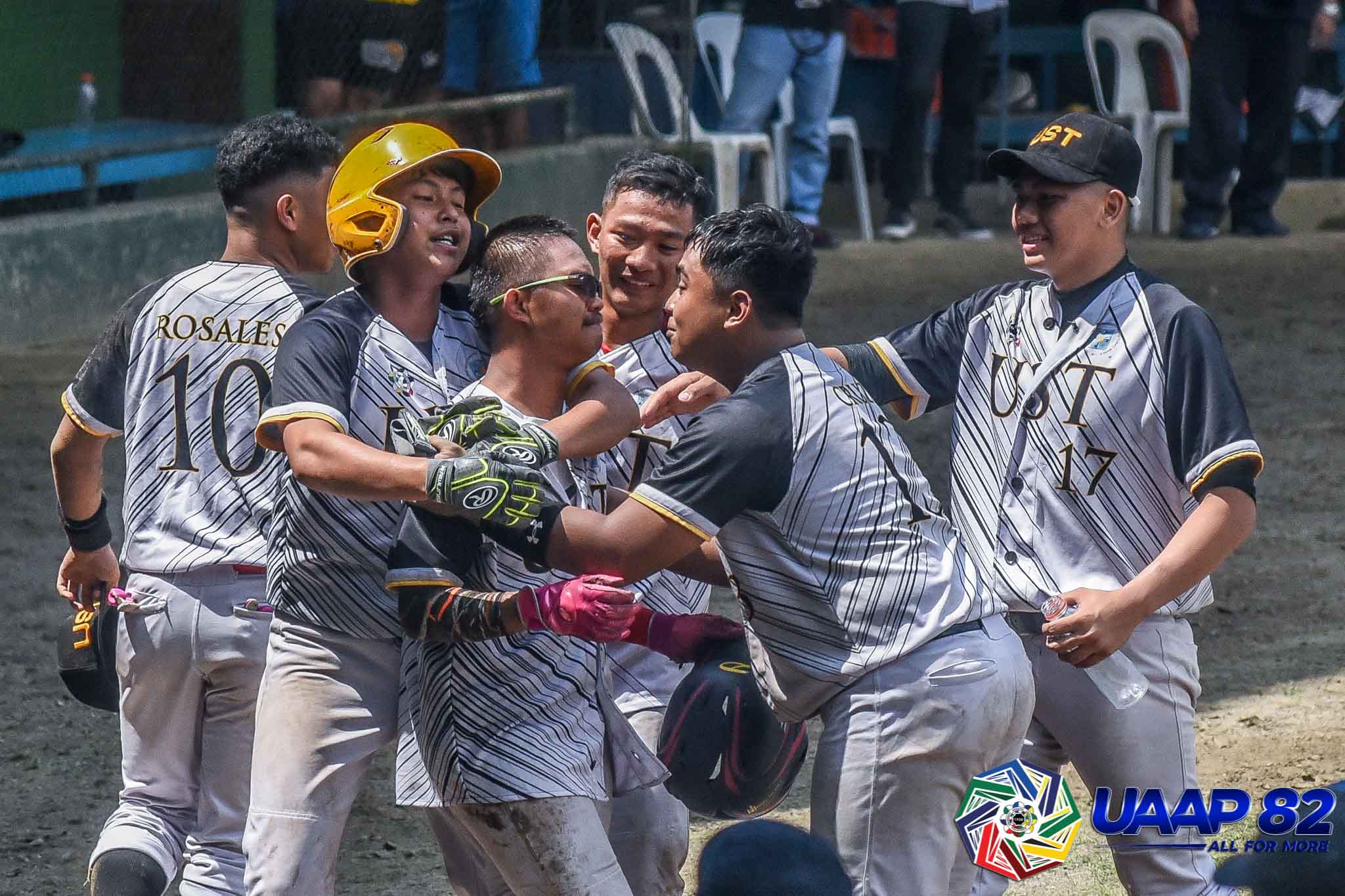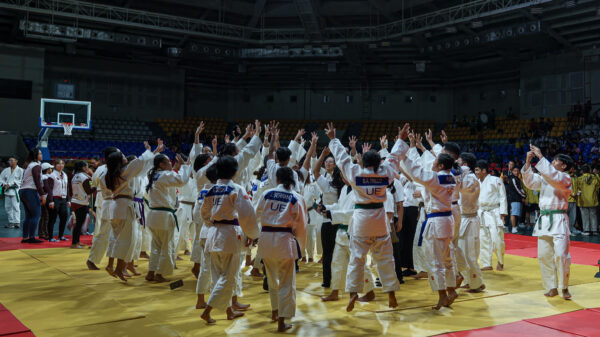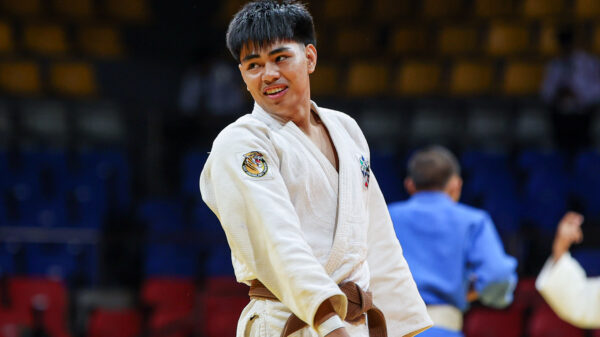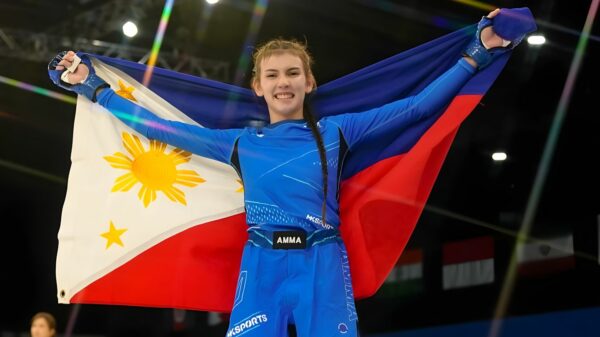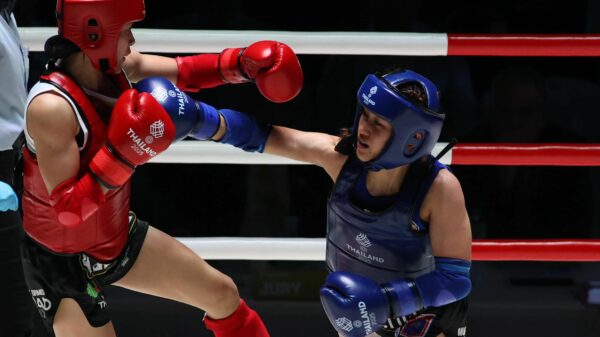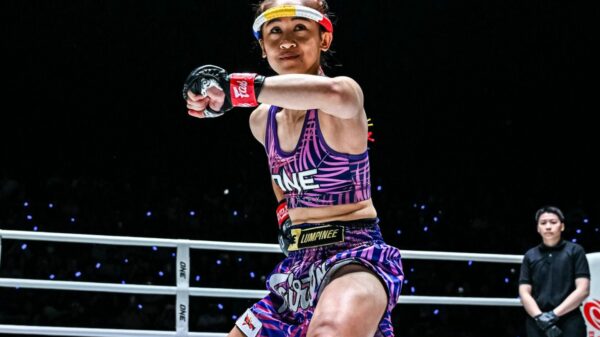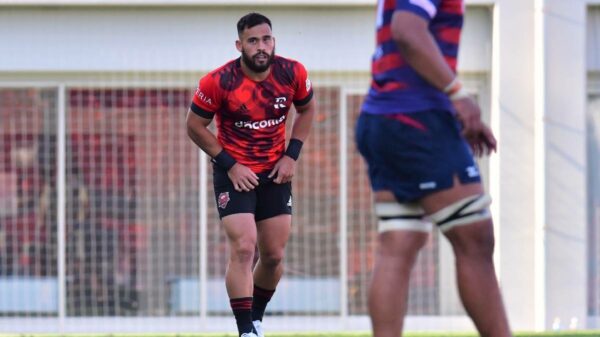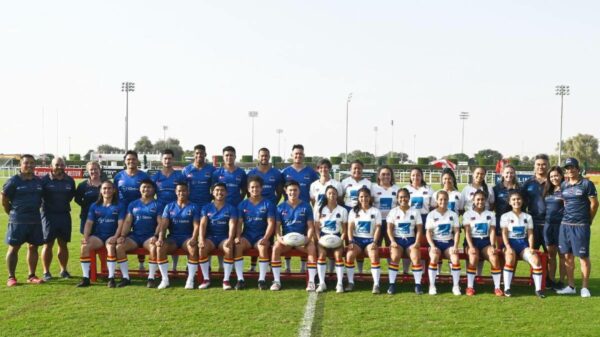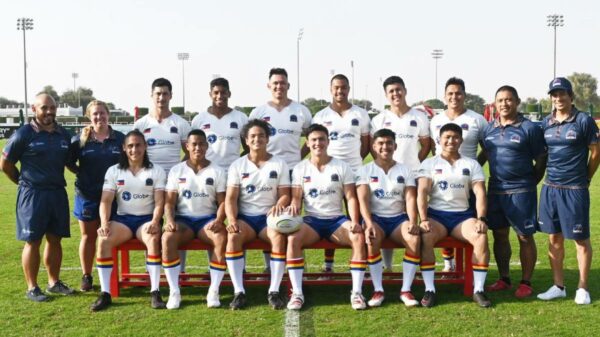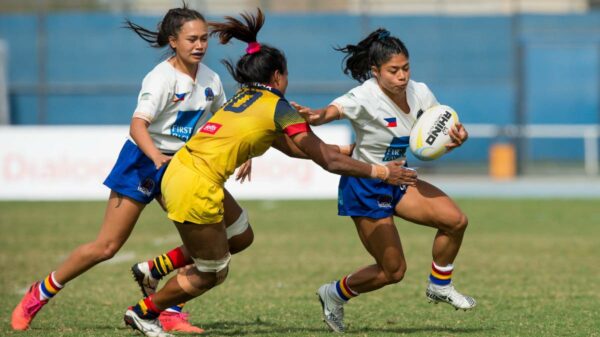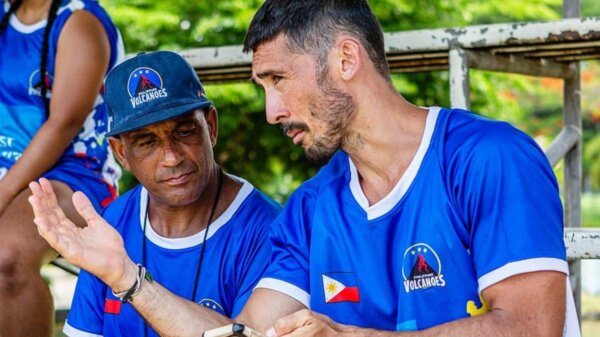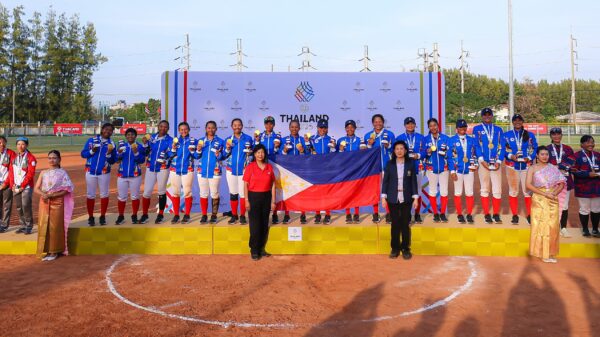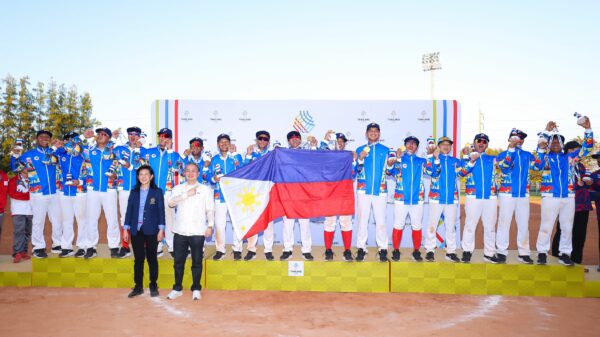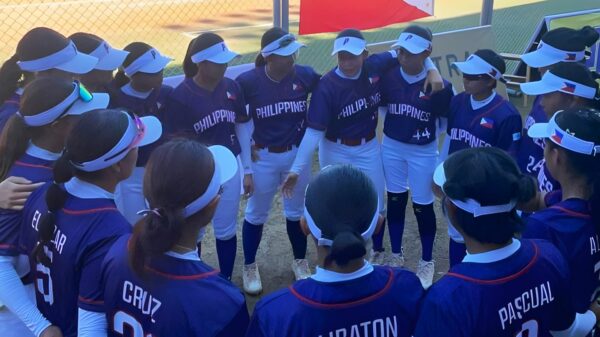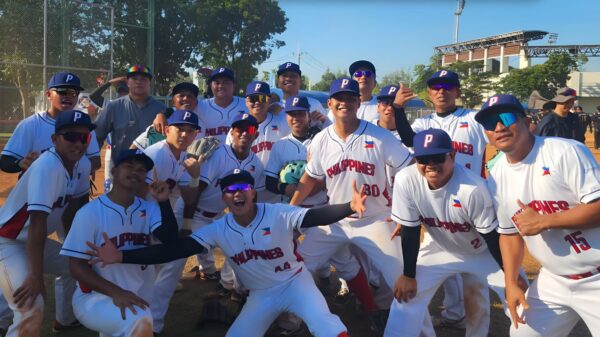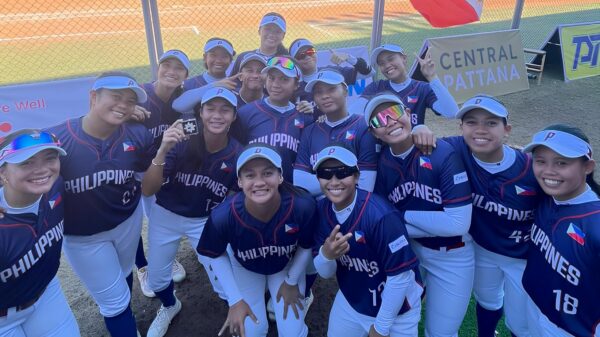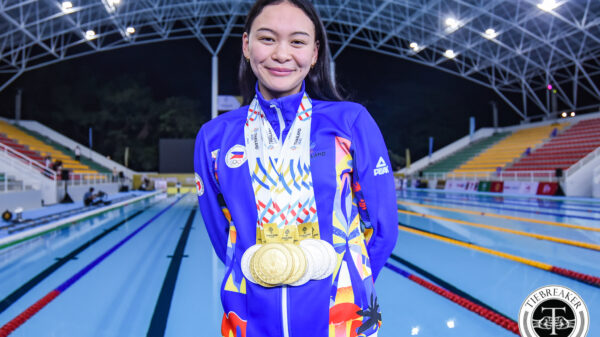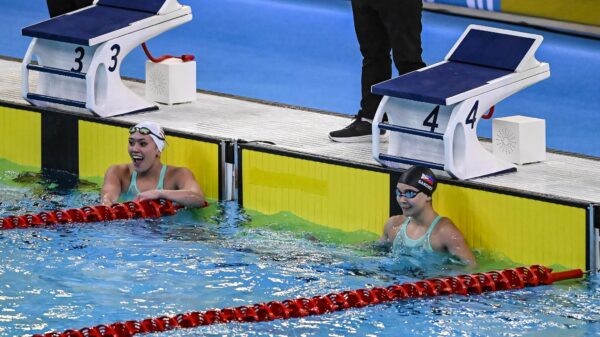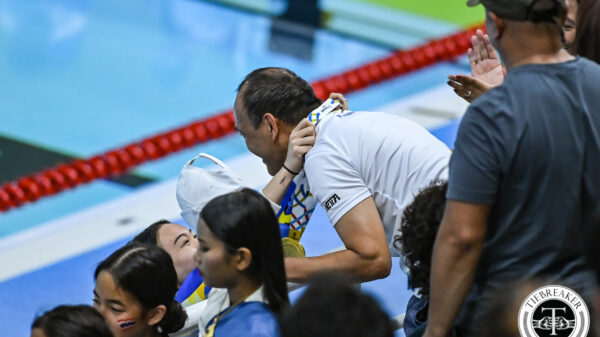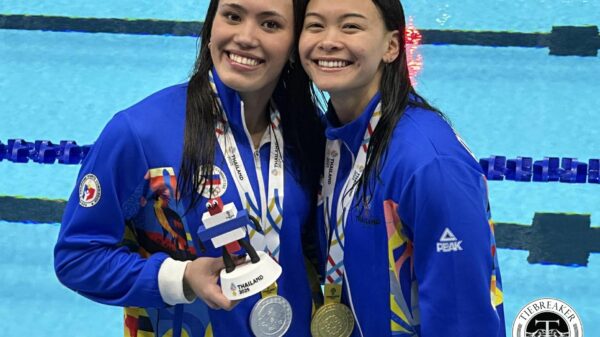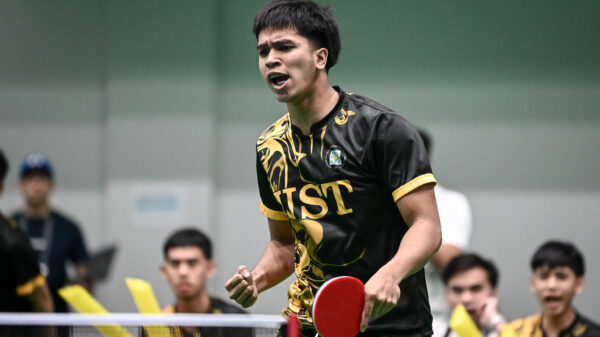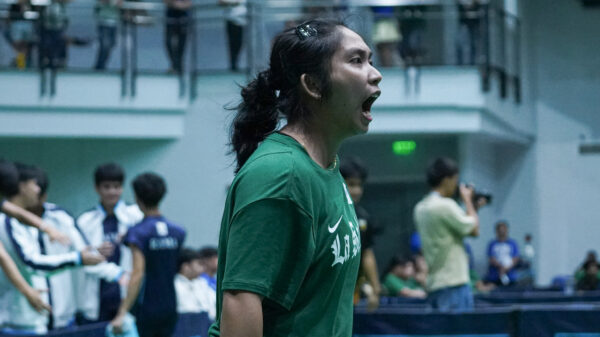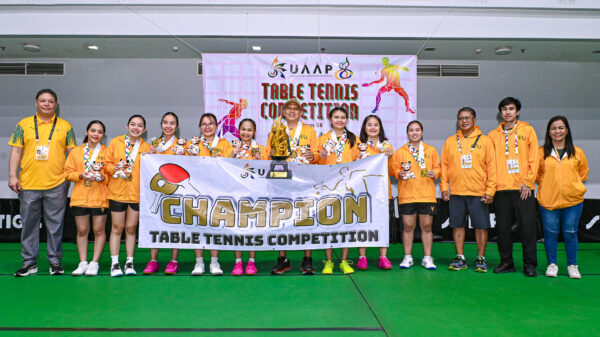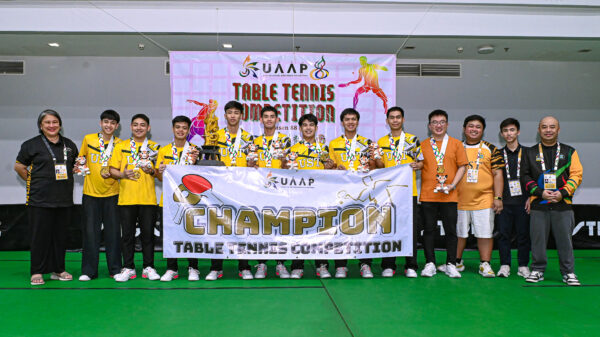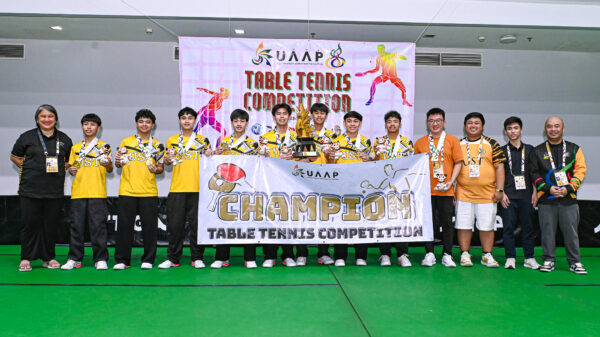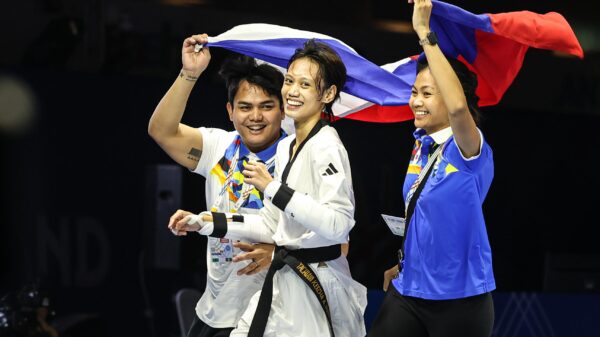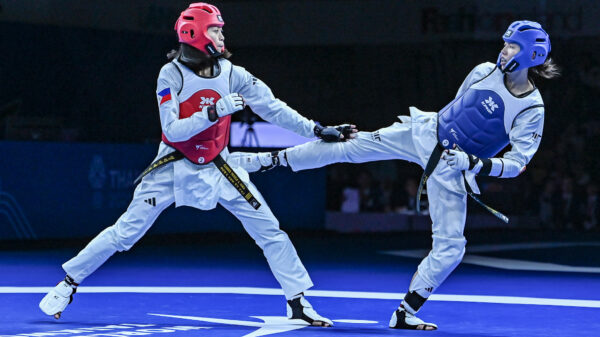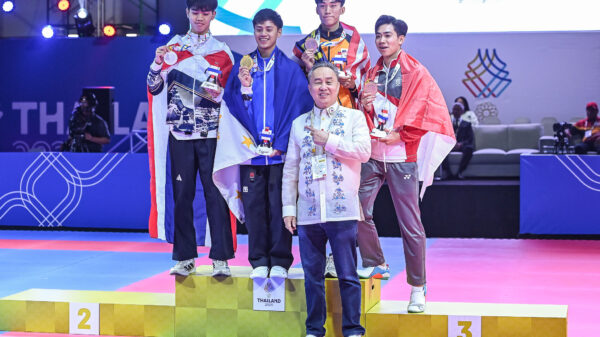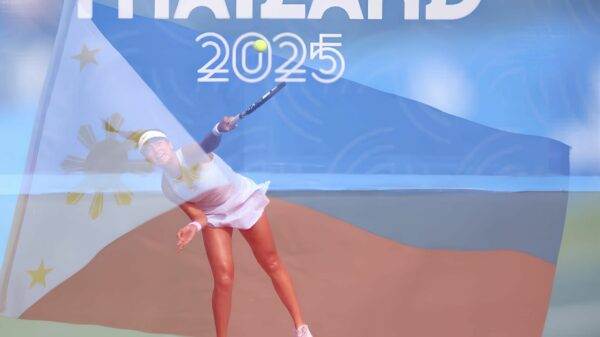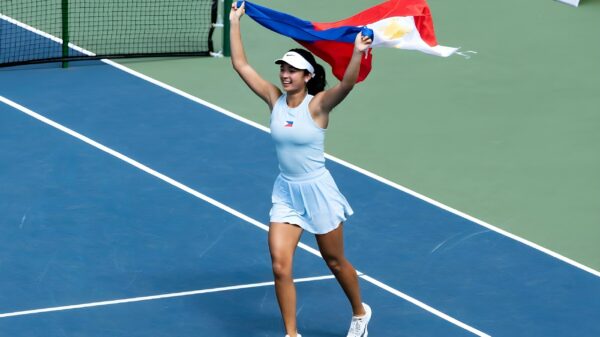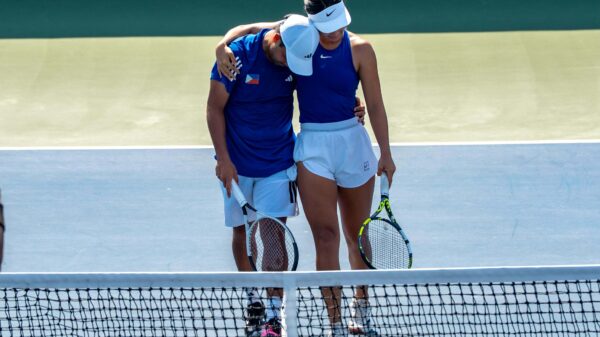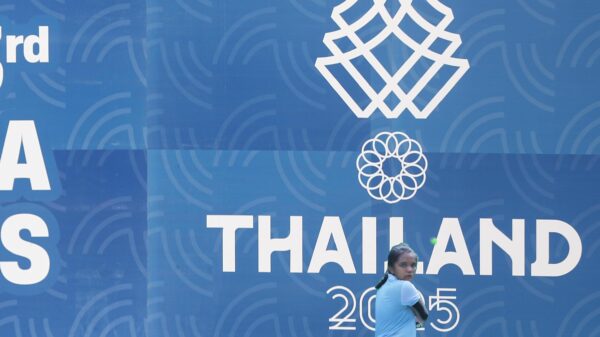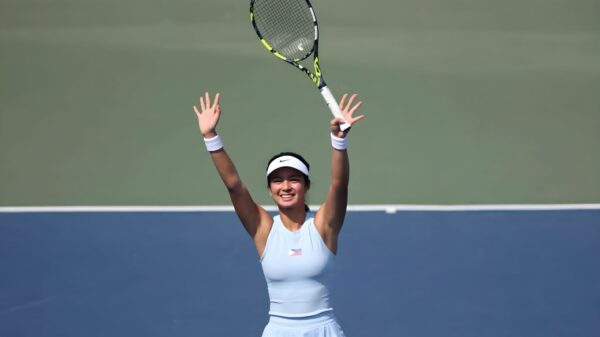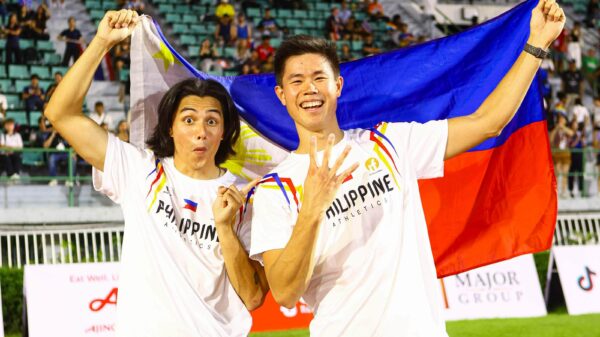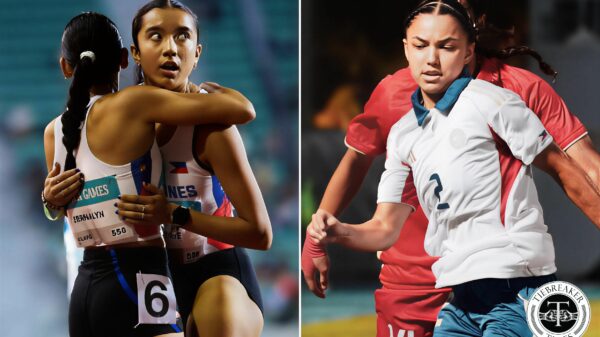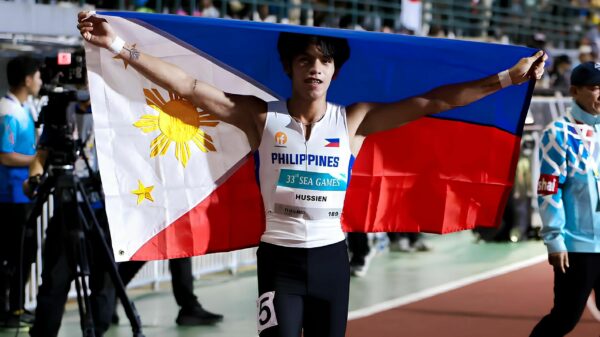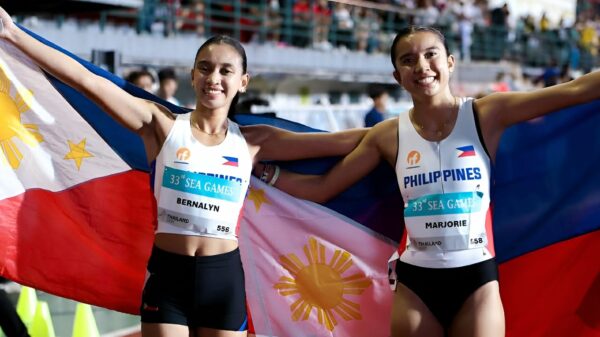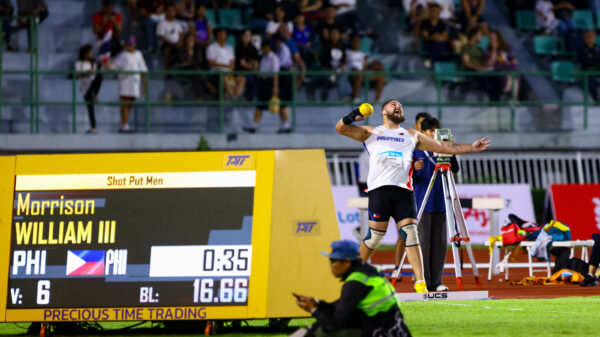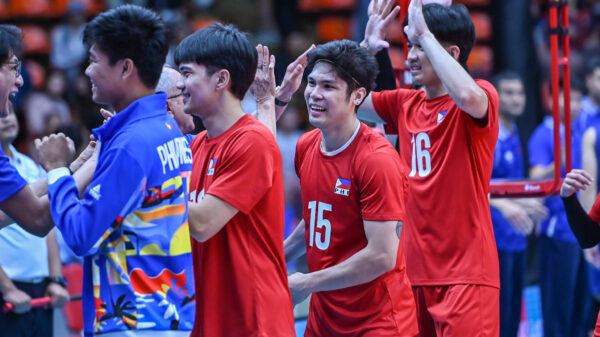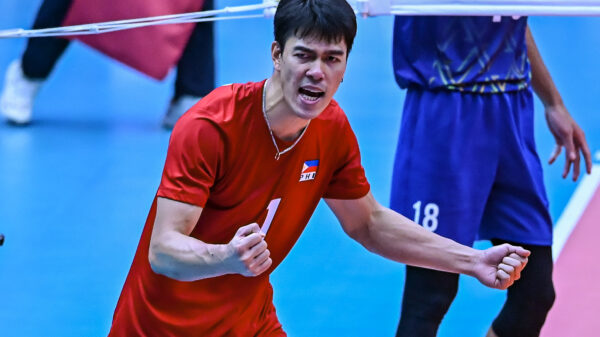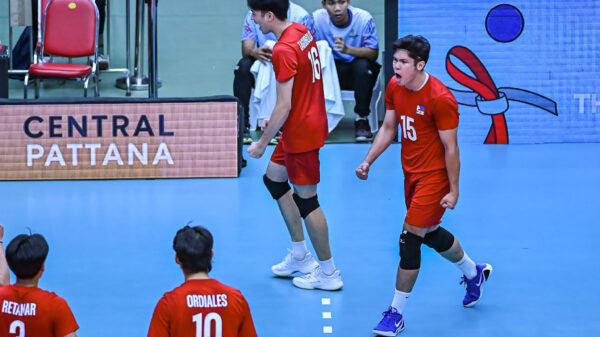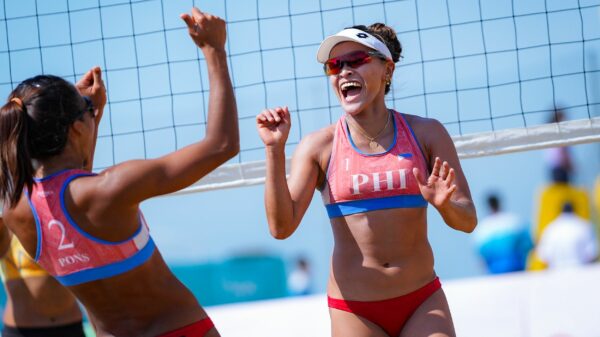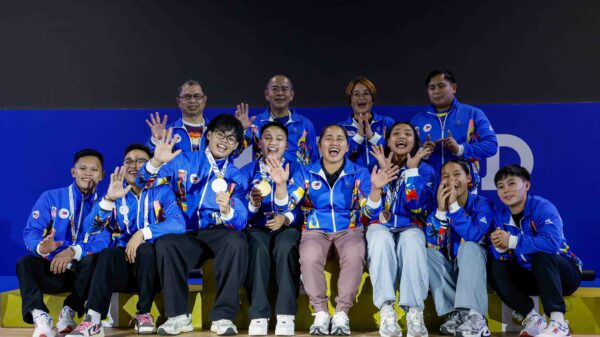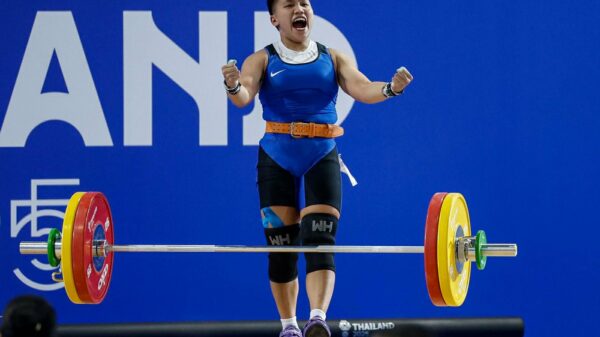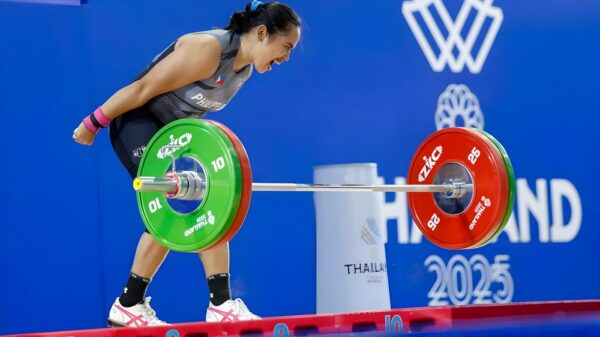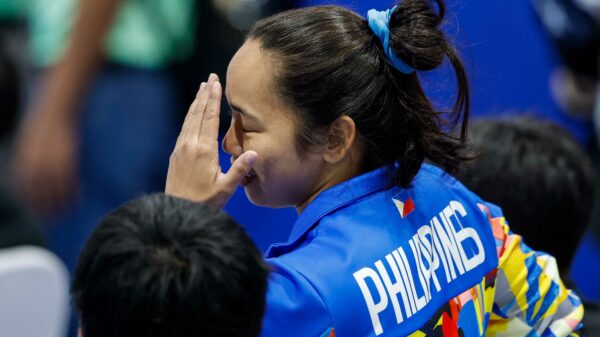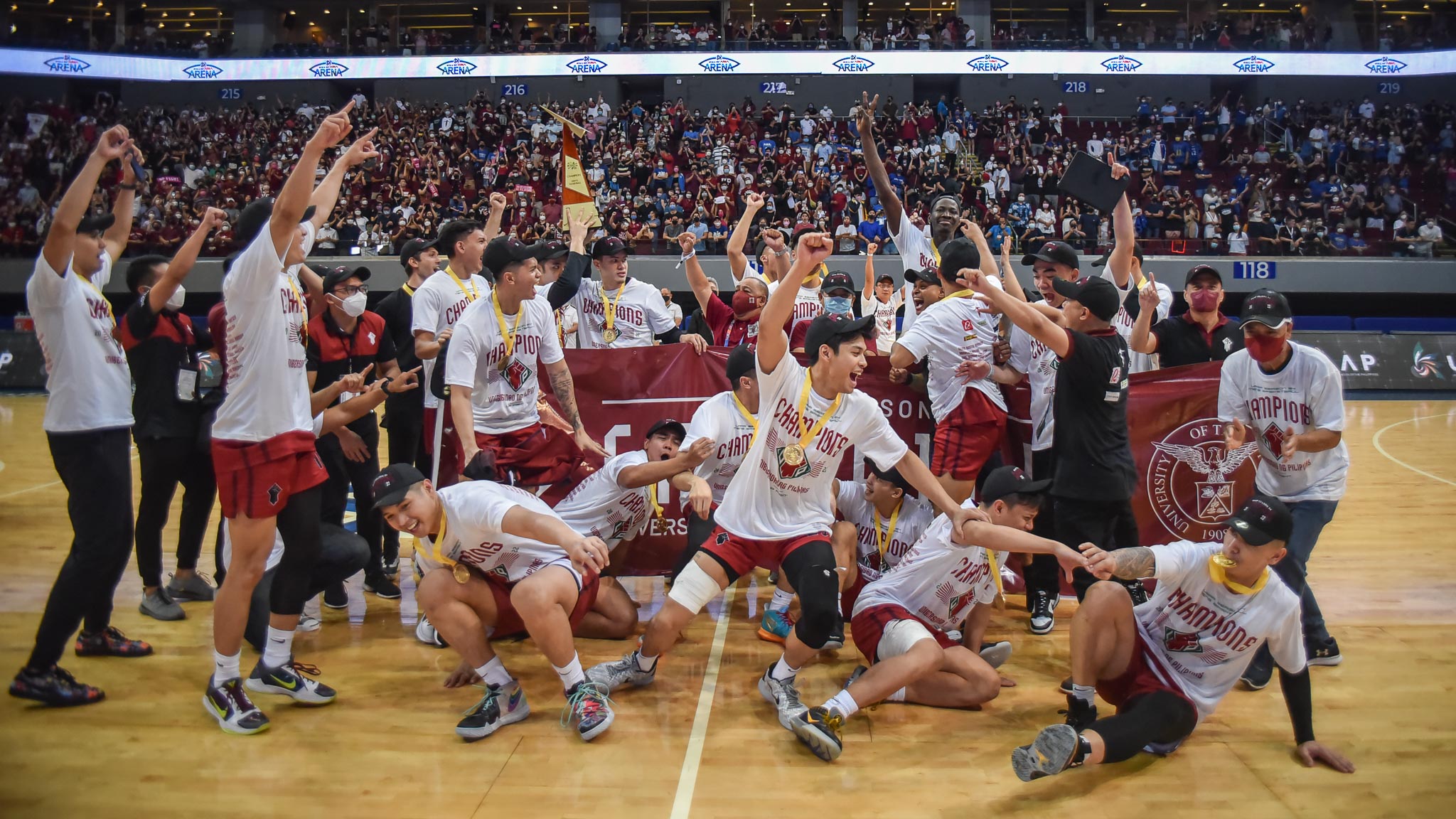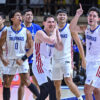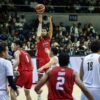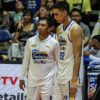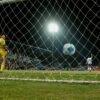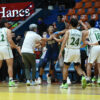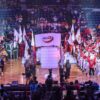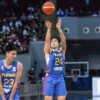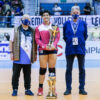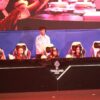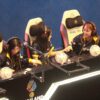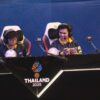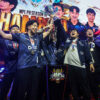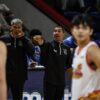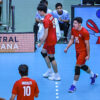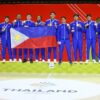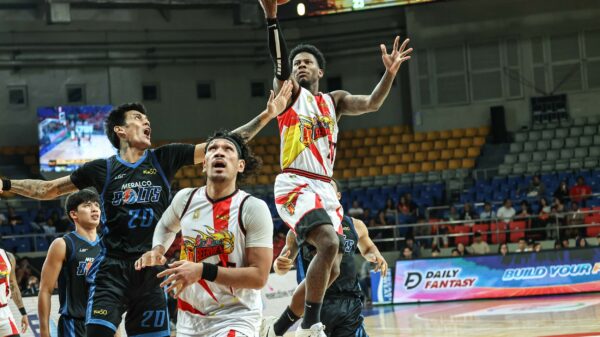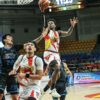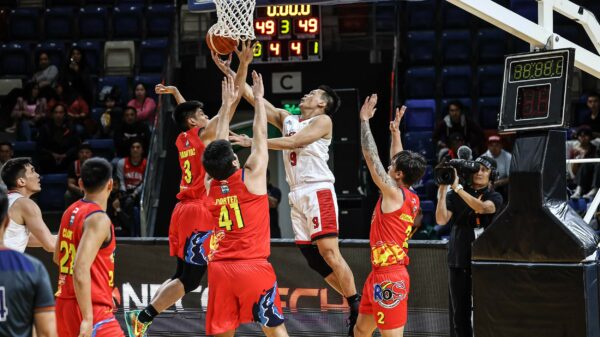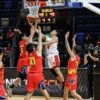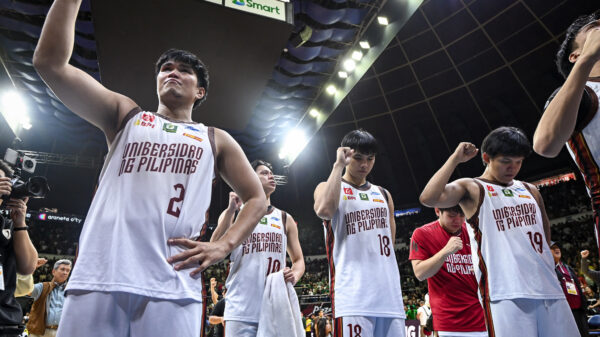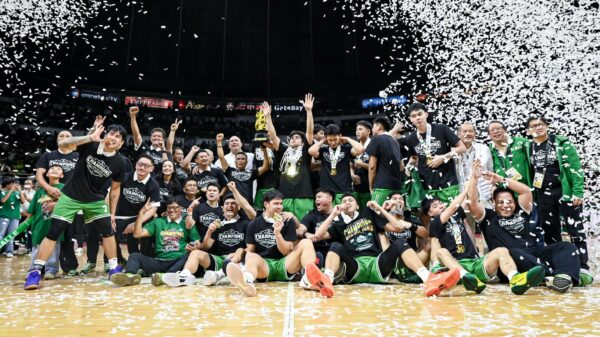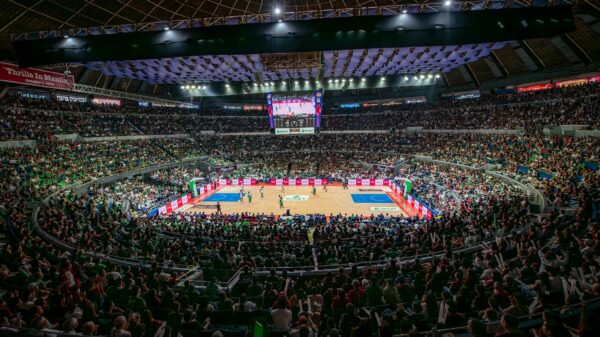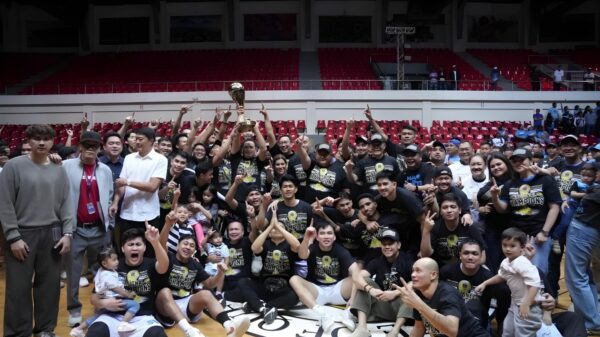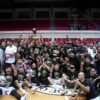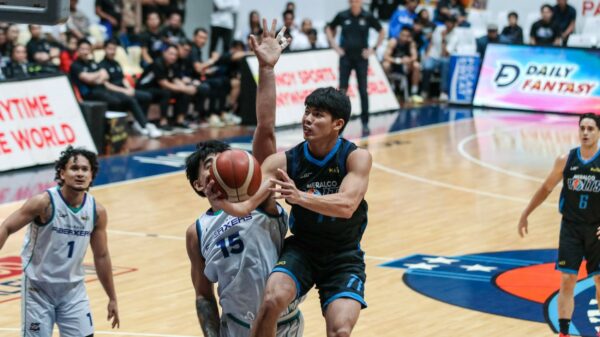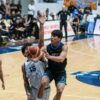Multiple times this season, University of the Philippines faced seemingly insurmountable odds – and each time, the odds proved meaningless as they strung together comeback after comeback against the league’s most talented teams.
Game Three against Ateneo last Friday was no exception. The Fighting Maroons battled back from a five-point deficit with a minute and 47 seconds left in overtime. They wrested the crown away from the former three-time champion and brought glory back to Diliman for the first time since 1986.
Here’s a look at how they got there, and how they eventually pulled it off.
Game One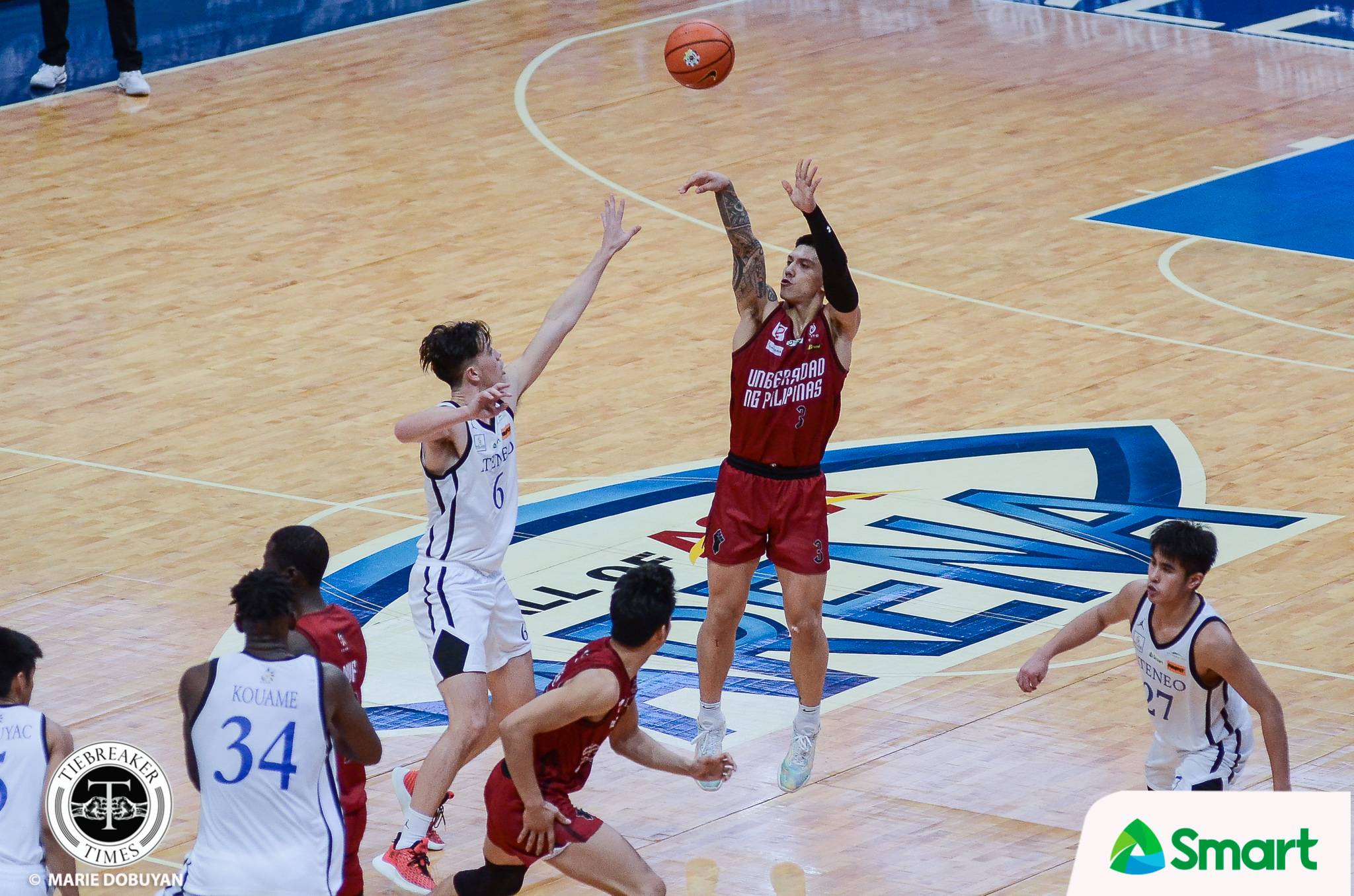
UP hacked out an overtime victory to start off the series after finding themselves down by eight with 2:24 to play. This James Spencer trey – which tied the game up and provided five extra minutes – came off of staggered screens followed by screen-the-screener action, with a Ricci Rivero flare option as a failsafe.
Chris Koon and Raffy Verano failed to realize the play as it unfolded. They miscommunicated on defense, which gave Spencer just enough daylight for a clean look from way behind the arc:
Beyond this, Ateneo ran their overtime offense through Ange Kouame, letting him try to create his own offense after Malick Diouf fouled out. The idea behind it was that Kouame had the size advantage over Diouf and he was playing well with 14 points at the end of regulation. The problem with this is that it made their offense predictable; UP keyed in on him and held Ateneo to just four points (all belonging to Kouame).
Under Tab Baldwin, the Blue Eagles’ offense was predicated on layers upon layers of options; in Game One, they seemed to simplify it by hunting a mismatch that wasn’t really there (Carl Tamayo and Zavier Lucero were tremendous during their stints guarding Kouame). In this crucial stop, Rivero could afford to leave his man and helped out on Kouame:
A key point in UP’s defense was their aggressive ball screen coverages. They moved their big man closer to the level of the screen, and this helped force 26 Ateneo turnovers. They hedged, showed, and blitzed Ateneo after showing mostly drop coverage in the elimination rounds.
The aggressive coverage forced ball handlers to pick up their dribble and pass. From this point, UP excelled at rotating and tagging, which prevented passing lanes from opening up. In this play, Diouf blitzed SJ Belangel and left Kouame open. Tamayo knew where the pass would go and was ready to intercept the ball, and this led to an easy finish on the other end for Diouf:
UP’s offense also waxed and waned depending on which lead guard was on the floor. As per InStat, in 25 minutes of JD Cagulangan, UP had a 98 offensive rating (ORTG). In 11 minutes of Terrence Fortea, UP had a 74 ORTG. In seven minutes of Gerry Abadiano, UP had a 71 ORTG. In four minutes of Brix Ramos, UP had a 63 ORTG.
It’s easy to see why Cagulangan is so important for UP’s offense. He led the league in assists and my passer rating statistics, and might be the best point A to point B ball-handler in the league. His skills allow him to get in the paint and collapse defenses. Here, he drew Kouame inside, which freed Lucero up for a triple:
Speaking of Lucero, he had his best game of the Finals here. He dropped 17 points, but the biggest thing was that he was disruptive on defense, allowing UP to slow down Ateneo’s league-best offense.
Watch how active he was on defense. Here, he made multiple positive contributions on defense that didn’t show up on the box score. He stopped Dave Ildefonso, deterred a Verano shot, forced Tyler Tio to pick the ball up, and showed on Gian Mamuyac:
Game Two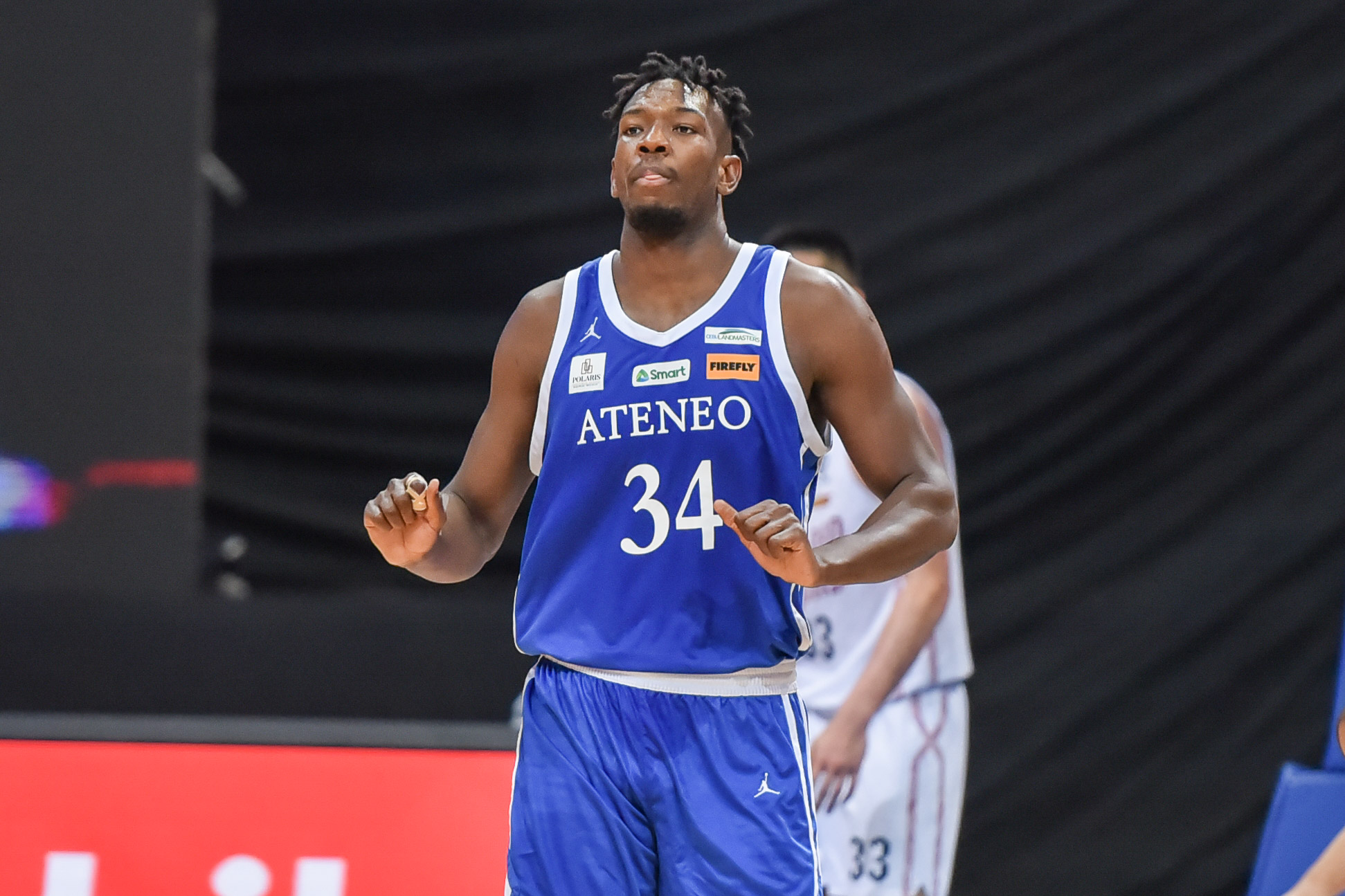
Ateneo has always been a team that adjusts very well. In Game Two, they showcased a few key tweaks that allowed them to beat UP by three.
Due to the aggressive coverages in Game One, UP forced a lot of turnovers after an Atenean picked up the ball and held it for an extended period of time. To combat this, the Ateneo bigs slipped the screen to provide a quick and easy passing outlet. The slip let Kouame gain steam, and the Blue Eagles took advantage of late and/or poor tags. This contributed to Ateneo cutting down their turnovers from 26 to 16:
Ildefonso struggled in Game One and was held to just six points with six turnovers as Spencer forced him to his uncomfortable spots on the floor. Ildefonso didn’t have the physical edge against the UP forward, so Ateneo set drag screens for him to give him space to work with. That let him gain momentum to go downhill. He had 10 points in the second game and went from being a -14 to a +8.
Ateneo played its best defense of the season, and UP struggled to consistently bend it in a meaningful way. The Blue Eagles threw multiple looks, and their counterparts struggled to find any consistent offense whether they were facing a zone, a man defense, or a junk defense.
The most interesting part of their defense was the switching. Tio and Verano switching here prevented UP from gaining any advantage from pick and rolls. Without an advantage or any clear passing lanes, Fortea tried to swing it to the opposite corner. Alarcon was somewhat open due to Ildefonso preparing to help on Tamayo if Kouame needed to rotate to protect the rim. That was a pretty easy pass to pick off:
UP’s best source of offense that game was Carl Tamayo, who finished with 18 points. His combination of size, skill, and shooting was oftentimes the only avenue for UP to bend Ateneo’s defense. He simply required a lot of defensive attention.
The panic caused by him touching the ball leads to defensive errors. Here, two Ateneans came as he got the ball while Spencer was unguarded, so he made good on the opening created here and hit Spencer with a pass for a triple.
He may not be the best passer, but he’s not selfish by any means:
The biggest reason for the Game Two win was Kouame. It is so hard to score on him at the rim, or anywhere for that matter. As per InStat, this is how opponents have shot with Kouame as the primary defender. To be able to hold opponents to just 33 percent at the rim is a luxury that the Ateneo defense has.
Kouame had eight blocks on the night to completely shut down UP’s offense. Whenever an Atenean perimeter defender made a rare mistake, it didn’t lead to much because more often than not, he was underneath the rim to send the shot back. His defensive impact is truly unmatched:
Game Three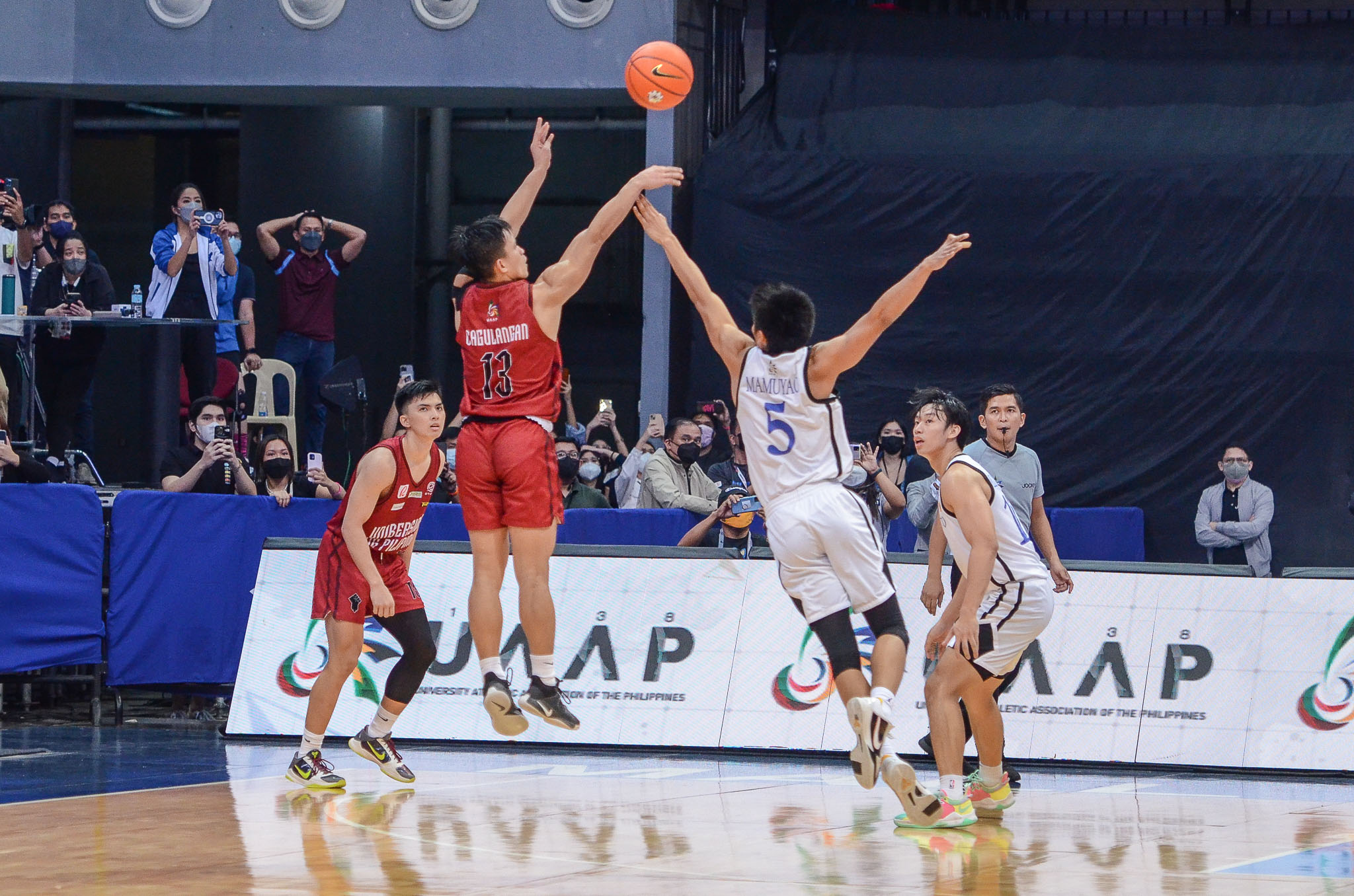
UP and Ateneo spent most of the season as the two best offenses in the UAAP. In the last game of the series, defense was the name of the game, and every single point had to be earned. In particular, though, Ateneo was the one having a harder time getting good looks; meanwhile, UP continued its strategy of aggressive pick and roll coverages and supplemented it with solid help defense.
In this possession, UP played true to its scheme. The players not involved in the pick and roll were ready to help, preventing Ateneo from finding a decent shot. At the half, Ateneo had a ridiculously bad 69.5 ORtg due to their inability to get any offense going outside of Belangel.
Ildefonso was particularly affected by UP’s defense, as James Spencer and Harold Alarcon were thorns in his side for the whole series. After a terrific season with Ateneo, he finished the clincher with just two points on one made shot. Spencer – nearly as tall, heftier, and quick laterally – prevented the Ateneo gunner from using screens, which negated the advantage we saw in the second game.
Ildefonso’s physical advantages weren’t as visible when Spencer was with him. Watch him try to move Spencer here with his non-dribbling hand to no avail. This play also shows the excellence of UP’s help defense: Tamayo was there to strip the ball, and Diouf was ready in case Ildefonso made it to the rim:
The Blue Eagles needed a superhuman effort from Belangel to stay in the game. As per InStat, Belangel’s shooting from inside the arc improved from 42.6 percent in the first three quarters to 68.2 in the fourth quarter. He is a player who plays better with the pressure turned up, and he reiterated that fact yesterday.
Belangel scored or assisted on 37 of Ateneo’s 69 points – that’s more than half of their total. When UP was stifling their offense like they’ve never experienced before, Belangel put the whole team on his back. With him on the floor, Ateneo was winning by six points; with him on the bench, they lost by nine. It felt that no matter what UP did to him, he found a way to will the ball inside the hoop.
In this possession, Belangel hit a one-footed floater off of the wrong leg. It was simply just one of those nights:
Hopefully, his legendary performance won’t be lost to time. Ateneo was really just one Belangel lay-up away from their fourth straight title.
After his terrific performance in the previous game, Ateneo keyed in on Tamayo. The defensive attention poured onto him negated most of his scoring, as he was limited to just six points. The good thing though is that he used the defensive attention to help his teammates get easy points.
He finished the game with five assists. This was my favorite one: Tamayo got the ball in the post and all eyes were on him, with the five Ateneans inching closer and closer to where he was. With all attention on him, Diouf cut inside, and Tamayo fed for an and-1 layup. He wasn’t a good passer in high school, but he’s improved massively in that department as the season unfolded:
Before we get to what happened in overtime, let’s remember the man who got us there in the first place: CJ Cansino.
Cansino has been UP’s spark plug off the bench all season long, and this game was no different. In his first game back after missing every contest since their elimination round win over Ateneo, he had 14 points in just 11 minutes, including the big triple to send the game to overtime. He showed no signs of rust and made up for lost time by hitting four triples for a team that had sorely missed his shooting.
With Ateneo in a zone, UP opted to swing the ball around in hopes of changing the zone’s shape and creating a gap for an open shot. Cansino passed it to Cagulangan, forcing Gian Mamuyac to leave Cansino momentarily due to the rules of their formation. Cagulangan took advantage of this tiny advantage and quickly passed it back to Cansino. Belangel tried to close out, but he couldn’t get there on time to bother more. Cansino saw the rim, and that was more than enough:
Heading into overtime, everybody saw these teams as they were: Ateneo had the champion’s poise, but UP had the heart forged by multiple battles that went down the wire. Heading into the extra period, it was anyone’s game.
Ateneo built itself a four-point lead off of a pair of Belangel floaters (his floater is honestly on par with the best practitioners in the pros; as soon as he gets five to 10 feet away from the rim, he’s money). On this specific possession, UP was improperly set up on defense, giving SJ the breathing room needed to knife in for the shot:
This is where Cagulangan’s onslaught began. Spencer put the clamps on Belangel and forced him to throw it away. Tamayo intercepted it, and Cagulangan got the ball in semi-transition. He juked the hell out of Mamuyac, the league’s best perimeter defender, and the threat of him passing to Spencer in the corner confused Belangel and freed him for the shot:
It only got better for him from here. After Mamuyac hit a three, the Fighting Maroons found themselves down five with less than a minute and a half to go. On the inbound pass, Diouf crowds an entry probably meant for Rivero and chucked up a long two for reasons unfathomable.
But watch Cagulangan here. He shed Belangel’s boxout and took the ball back out. He knew the clock was ticking due to the airball and he, who came into this game a 15.4 percent shooter from deep, knocked down a fadeaway triple over Belangel.
Somehow things got even better.
This one just felt like the universe conspiring to make Ateneo lose. Belangel got a clean look at a layup, but he failed to convert. Kouame, a man who averages multiple putbacks a game, failed to tip it in. No other way to explain it other than Ateneo just not having luck on its side during the end game:
With a chance to take the lead or tie the game, Cagulangan waves off Rivero, who was asking for the ball in the corner. He opts for the spread pick and roll with Diouf; Belangel fails to navigate the screen, and Kouame comes toward Cagulangan to prevent an open look. Ildefonso was too concerned with Rivero in the corner and failed to tag the rolling Diouf. With Kouame mid-air, Cagulangan zipped a pass by him and the soon-to-be Finals MVP tied the game up with a two-handed finish.
Of course, things got much, much better.
In Ateneo’s last possession of the season, UP capped off a defensive clinic. Spencer expertly navigated through a Kouame butt screen and a re-screen; in concert with Spencer, Diouf hedged to prevent a pull-up or a drive. This excellent point of attack defense forced Belangel to pick the ball up. With eight seconds remaining, Ildefonso was left on an island with the rookie, Harold Alarcon, to do the one thing he does best: get a bucket. Alarcon, however, stayed connected and did enough to bother the shot.
A lot of credit here goes to the coaching staff led by Goldwin Monteverde. They’ve drilled their wards as best as they can, and the hard work bore fruit. And he never plays favorites; he plays the ideal lineup depending on the situation. In this possession, Tamayo — his golden boy from back when they were together with National University in high school — was on the bench in favor of Lucero because he and Diouf form the strongest defensive frontcourt on the team.
Now we get to the exciting part. Cagulangan, the transferee from La Salle, took matters into his own hands. He played 34 minutes and 27 seconds for La Salle in all of his UAAP appearances combined. In this one, he played 37 minutes and 45 seconds. Bawat segundo, sulit.
With the clock running down, Cagulangan opted for another spread pick and roll with Diouf. This time, Mamuyac failed to smoothly navigate the Diouf screen and Kouame gave Cagulangan a bit of space due to the possibility of another Diouf roll. Reading the situation, Cagulangan stepped back and hit the biggest shot in UP history, capping off a frenetic endgame flurry where he scored or assisted on 10 of UP’s last 13 points to etch himself in league history forever.
It doesn’t get any better than that.
This was a series that either team could have won – a highly-competitive back-and-forth affair that brought out the best in the players and their mentors. History would have been made either way, but there had to be a winner – and for this season, the winner was UP.
This new-age roster completed the turnaround started by Paul Desiderio and the “Atin ‘To” Maroons of Season 81 and did what many thought was improbable, if not unthinkable: beat Ateneo. It took stellar offensive performances from stars like Tamayo and Rivero; suffocating defense from key players like Lucero, Diouf, and Spencer; terrific scouting and game-planning complete with adjustments and rotation tinkering from Monteverde and his staff; and an explosion by a breakout star in Cagulangan just to beat all odds. It may have taken 36 years, but it was definitely worth the wait; now, the 1986 championship will no longer sit alone in the trophy case ever again.
—
All UAAP games stream live on GigaPlay presented by Yamaha. Download it now on Android or IOS.


